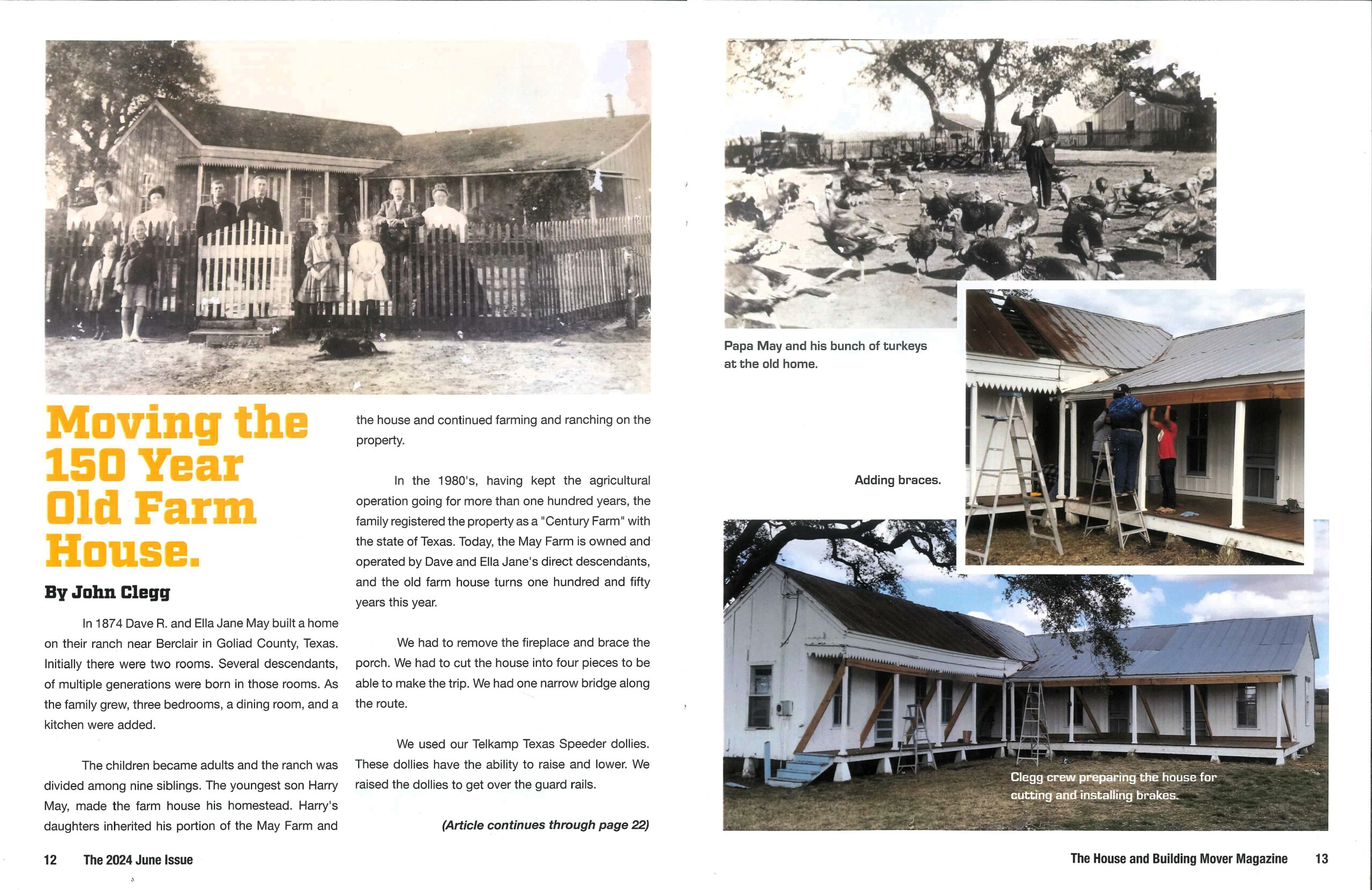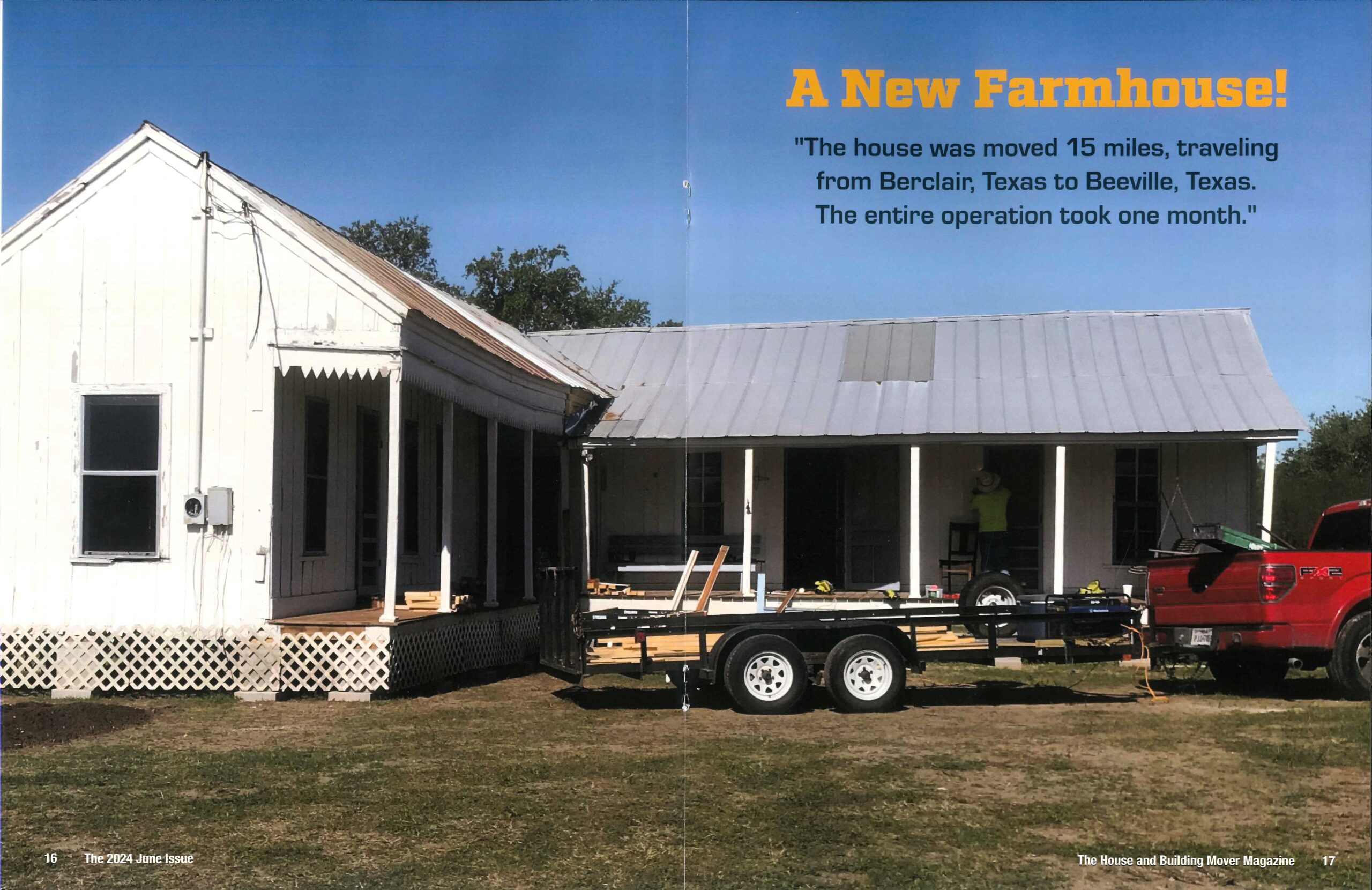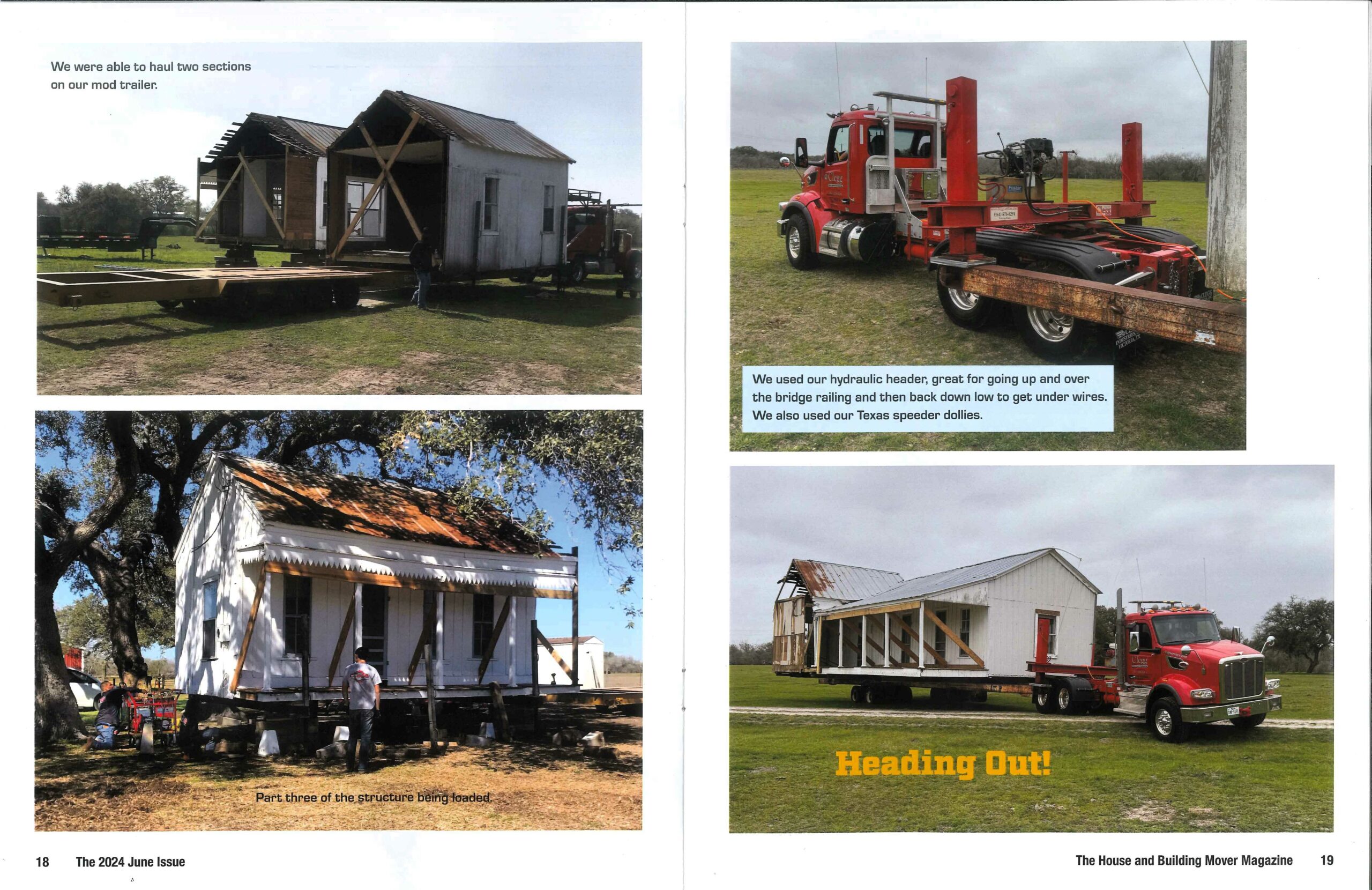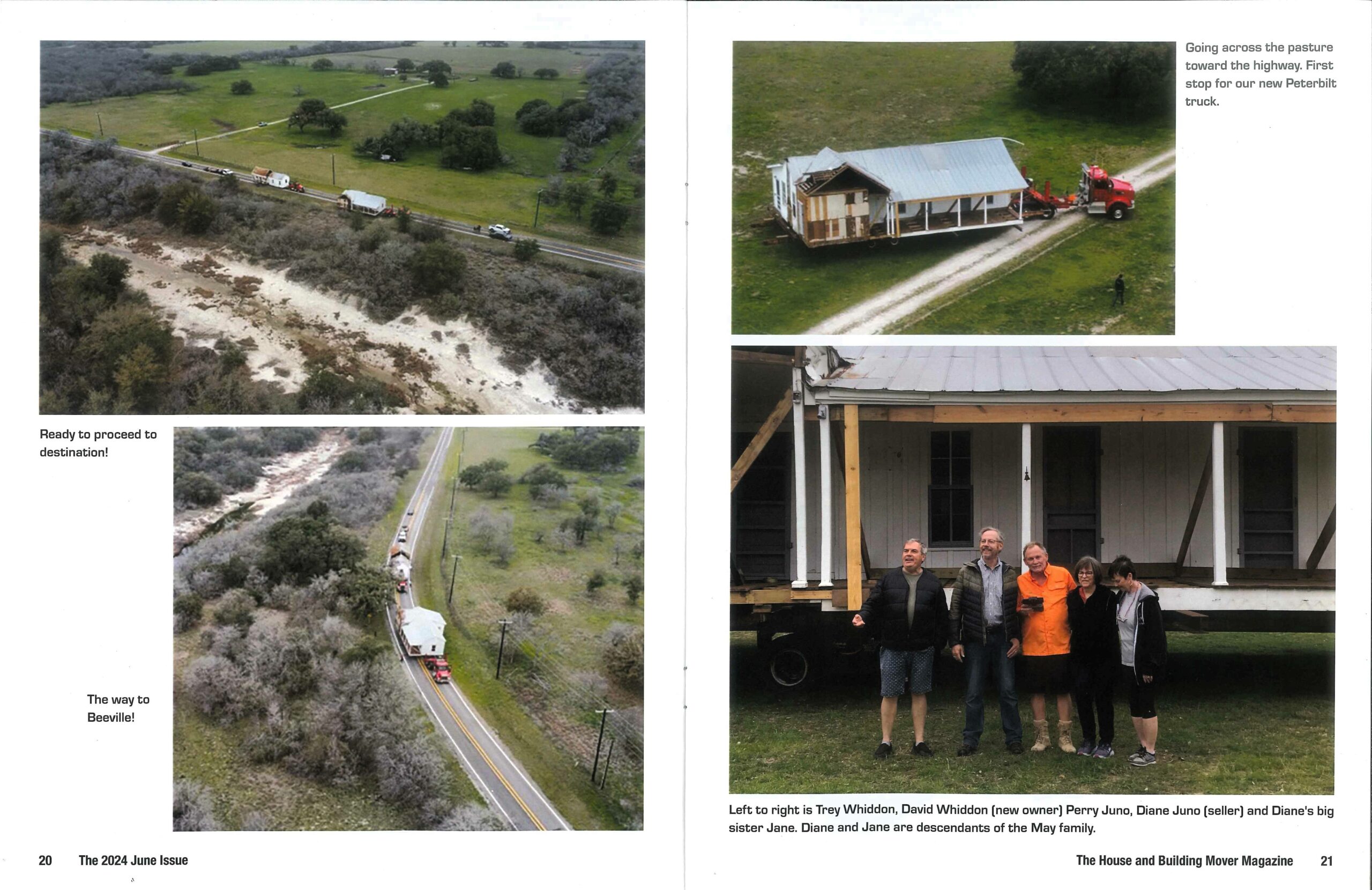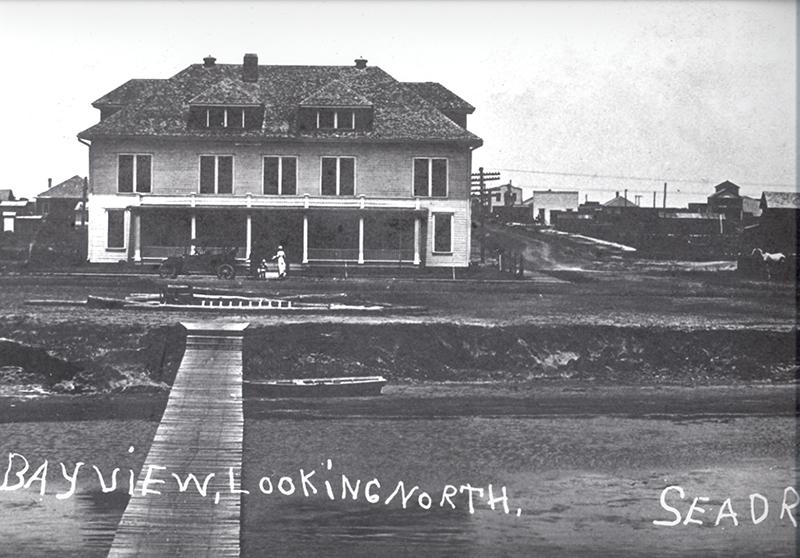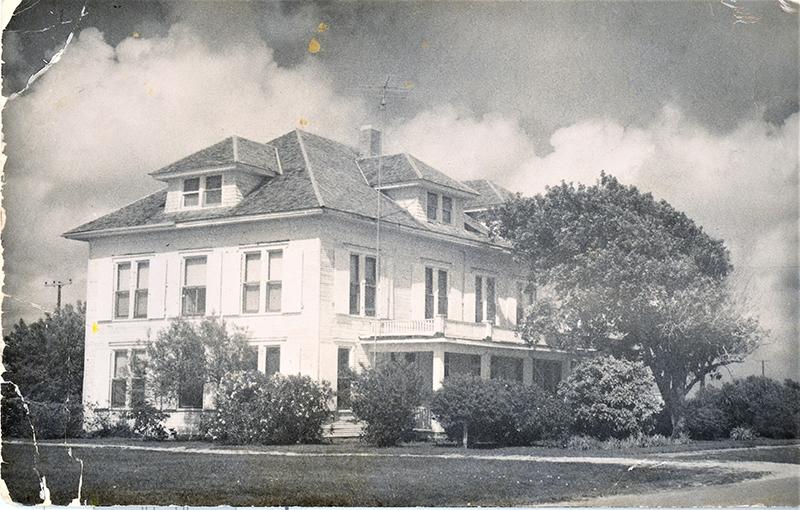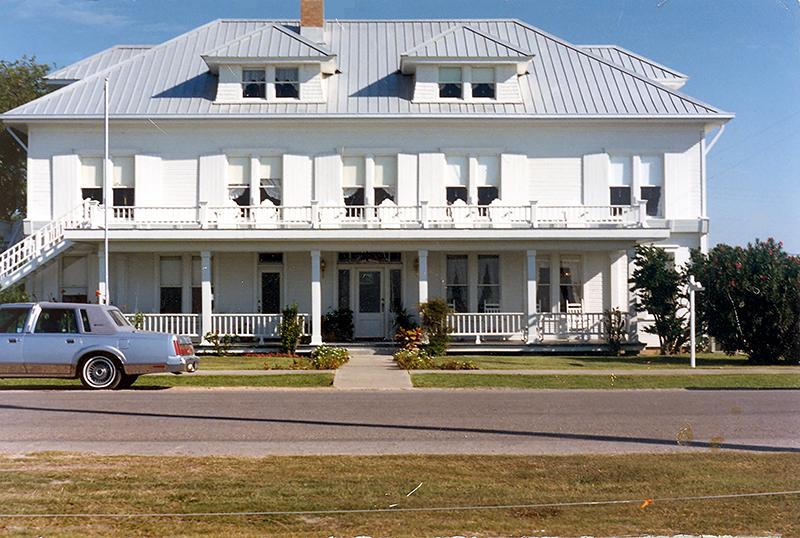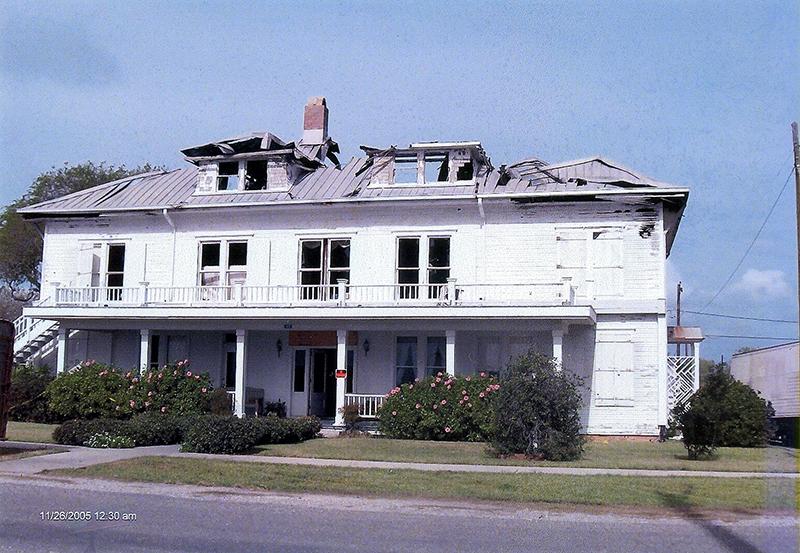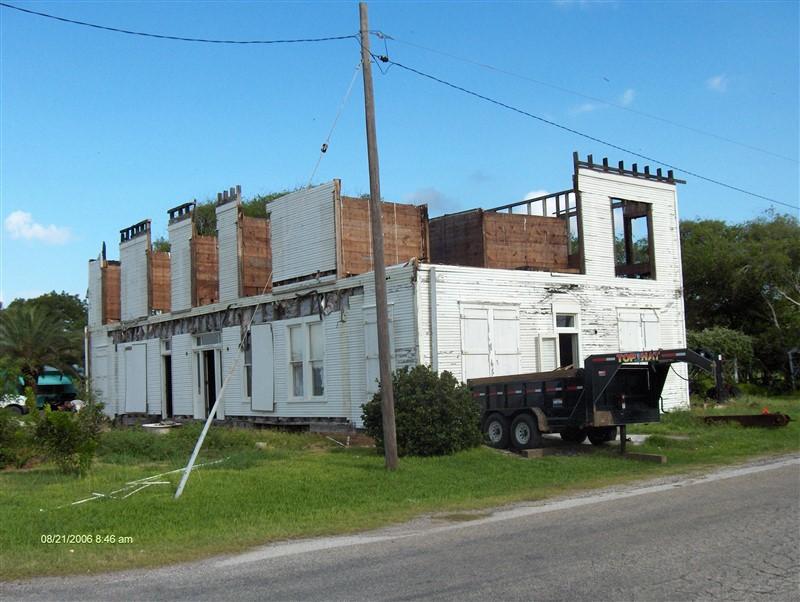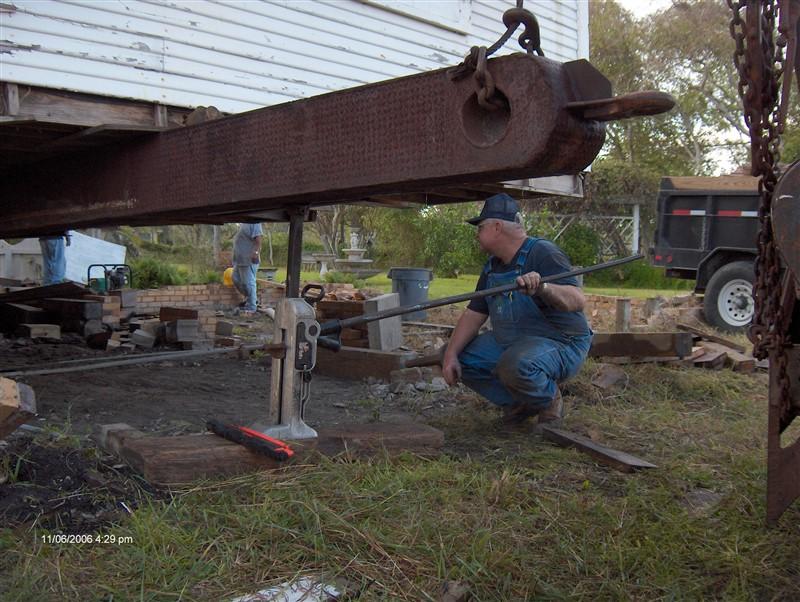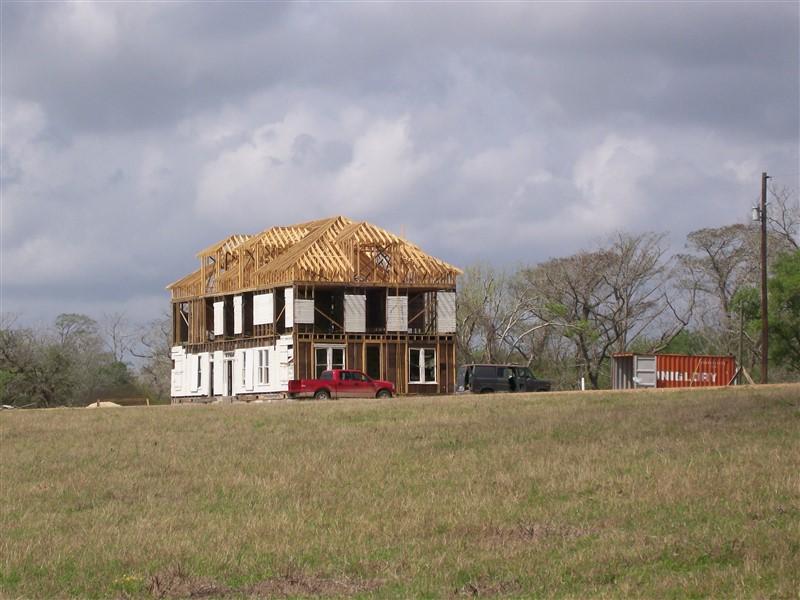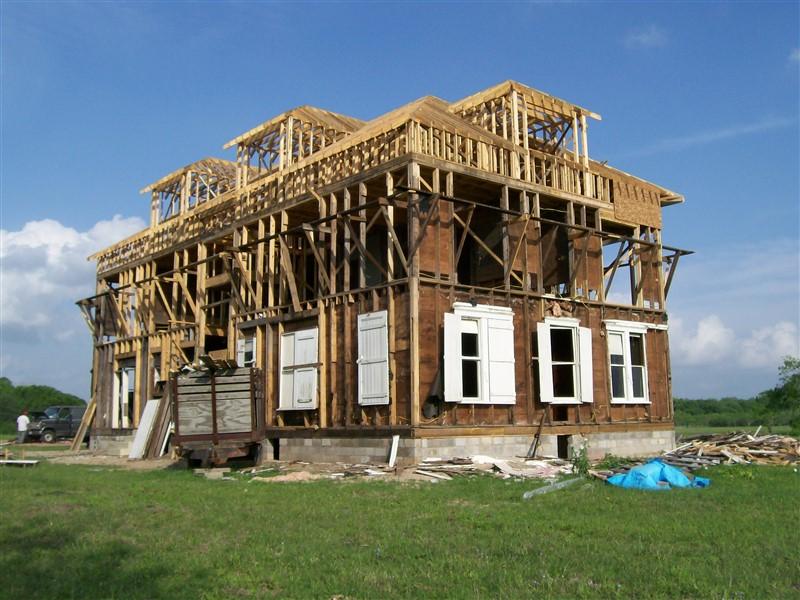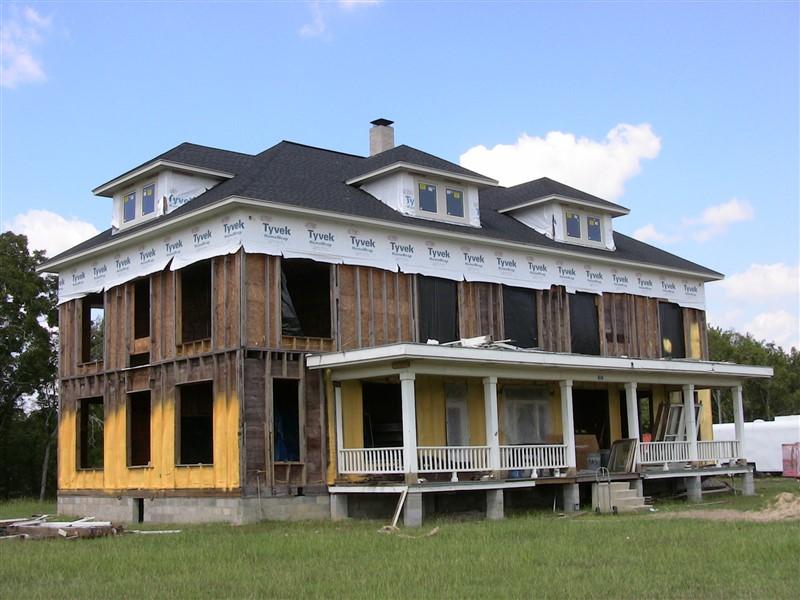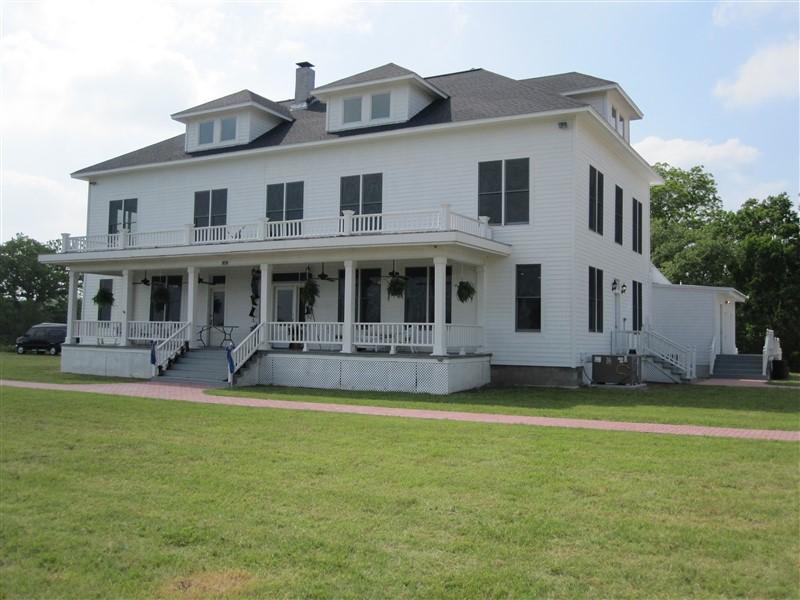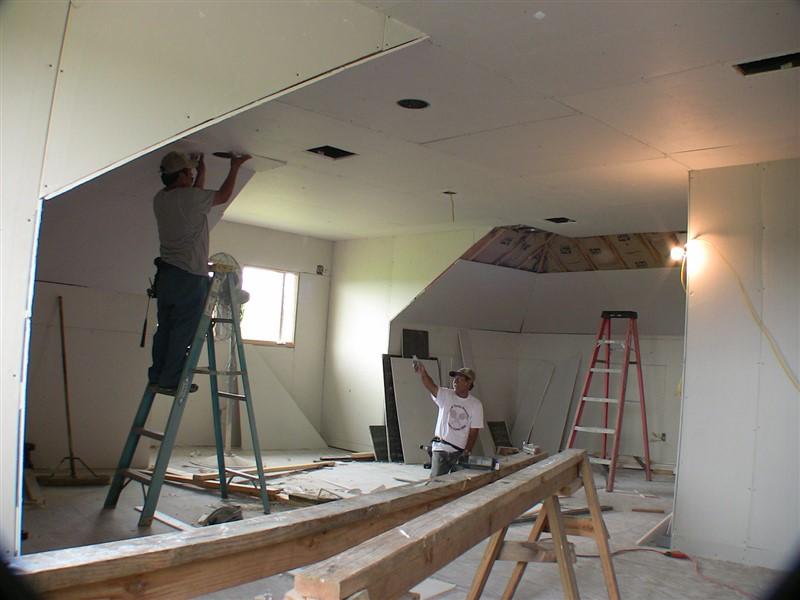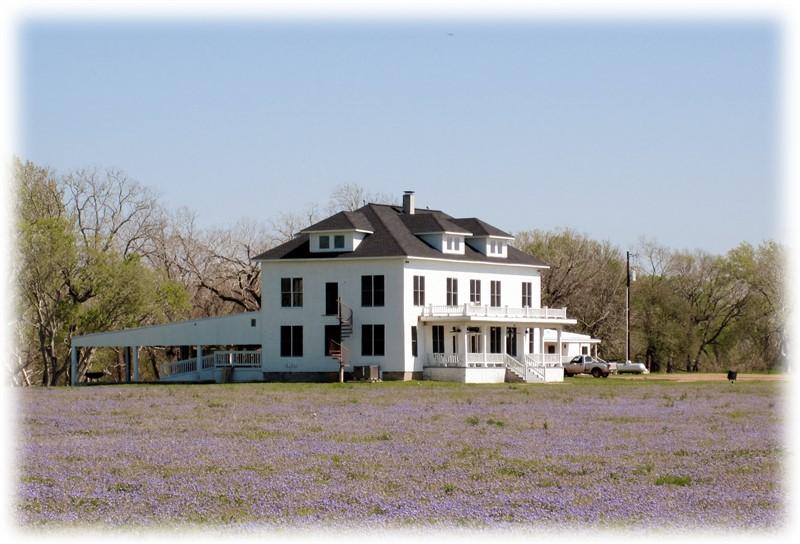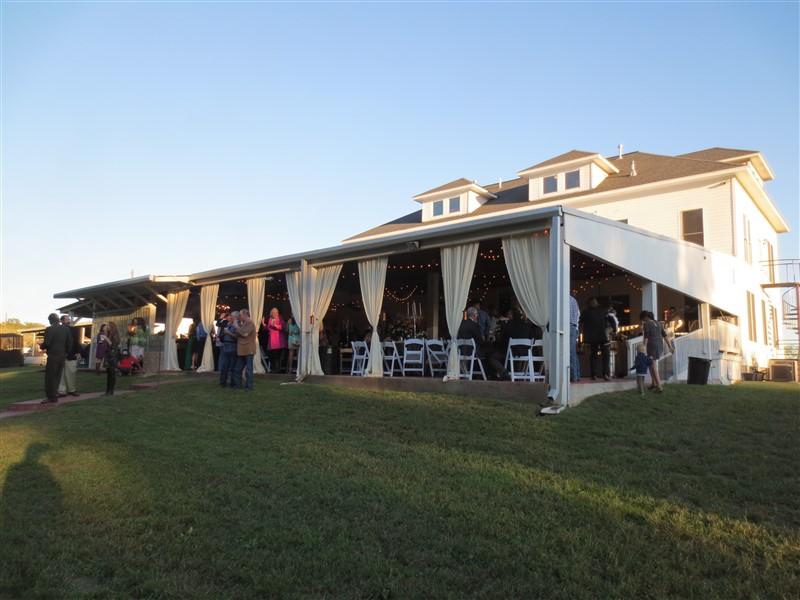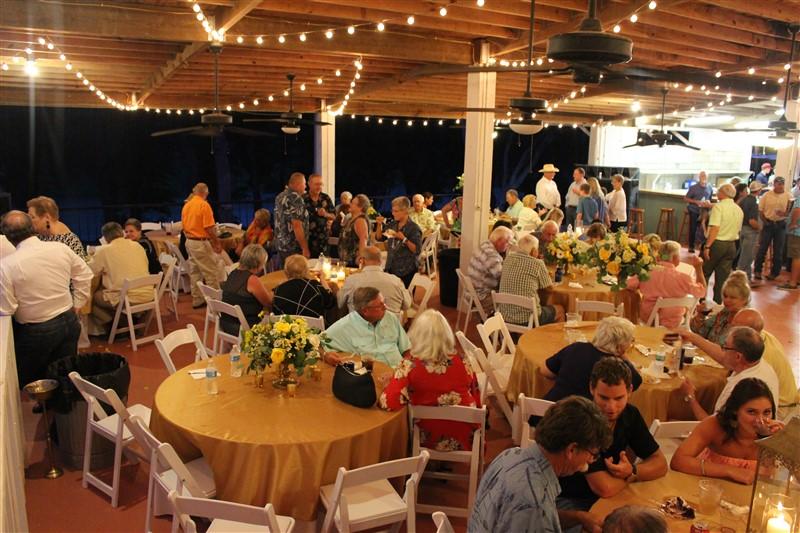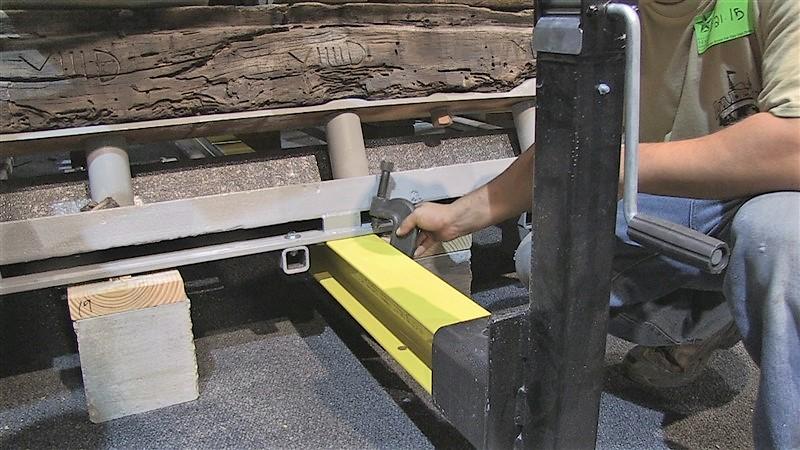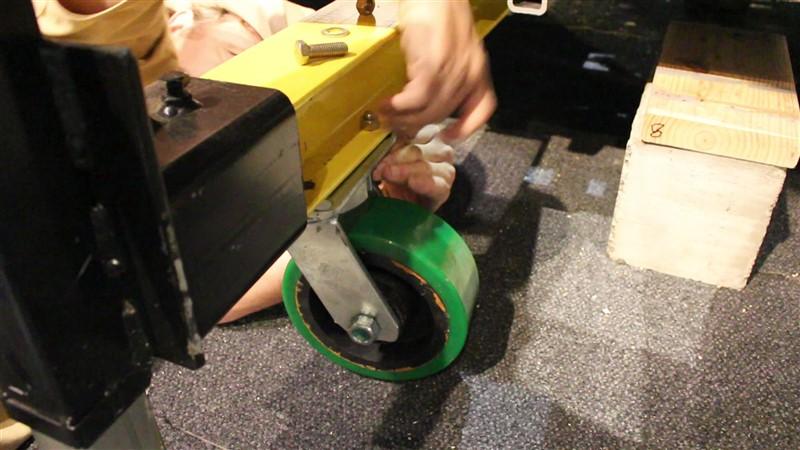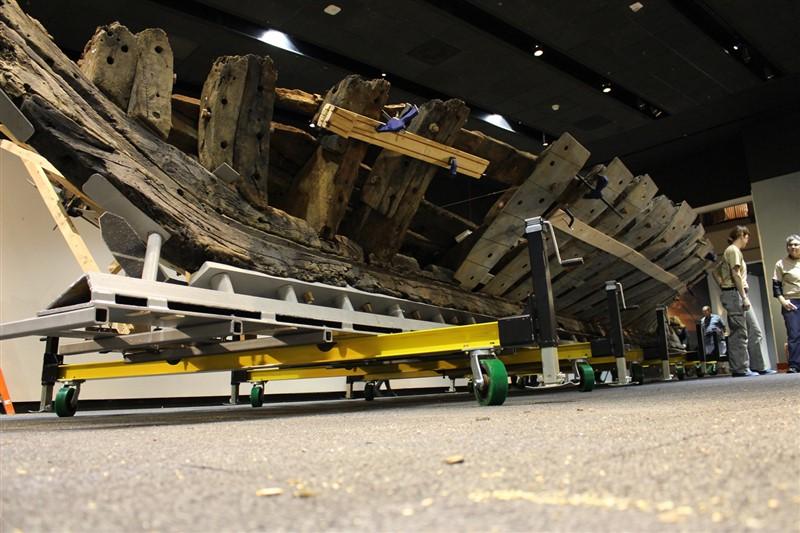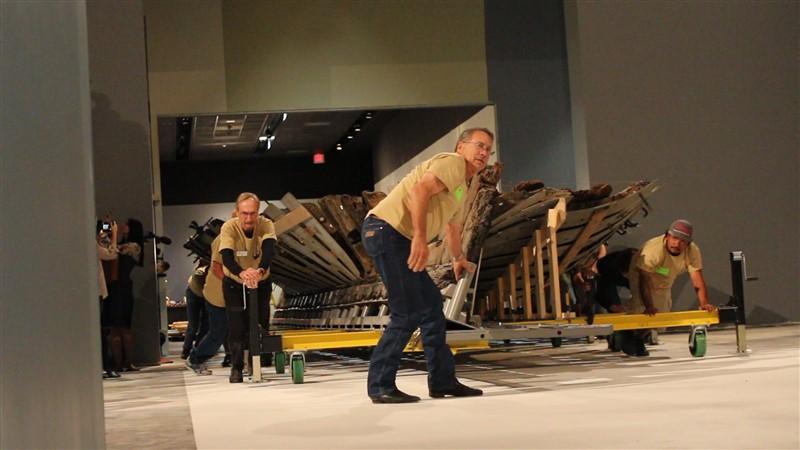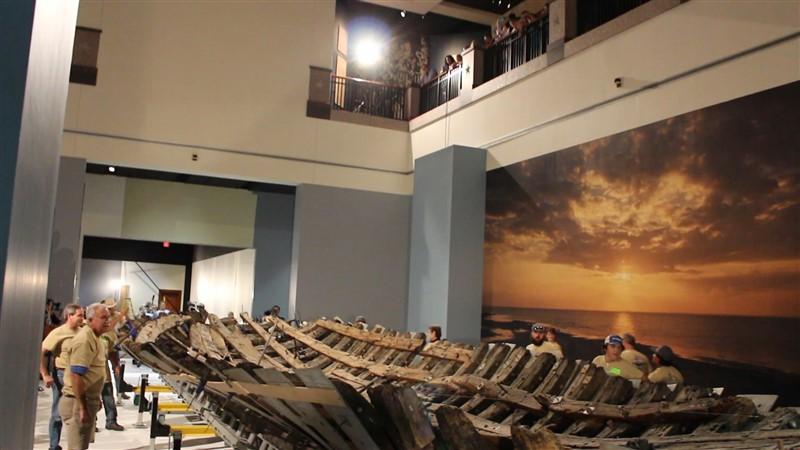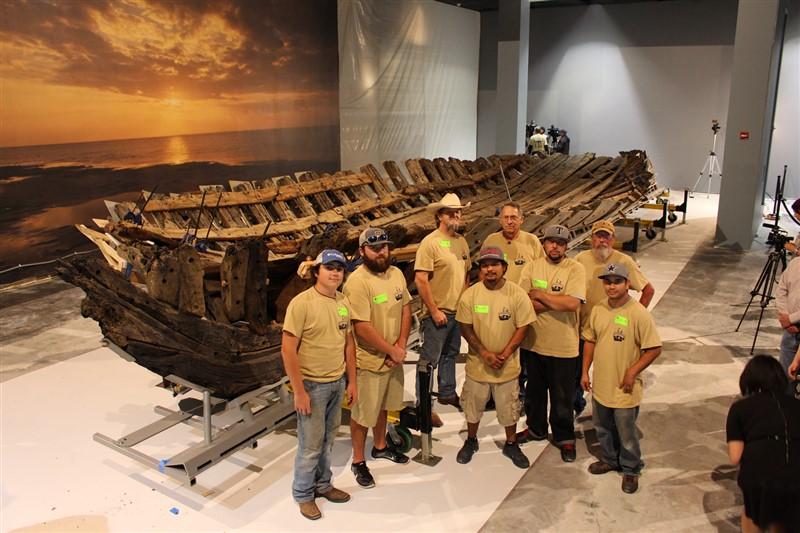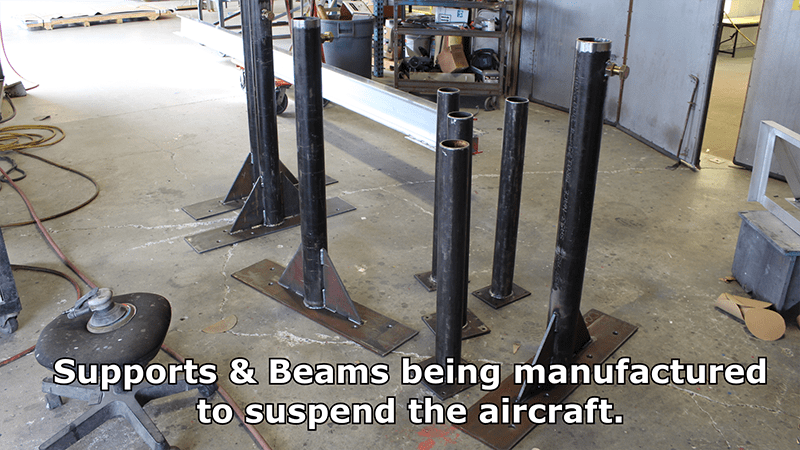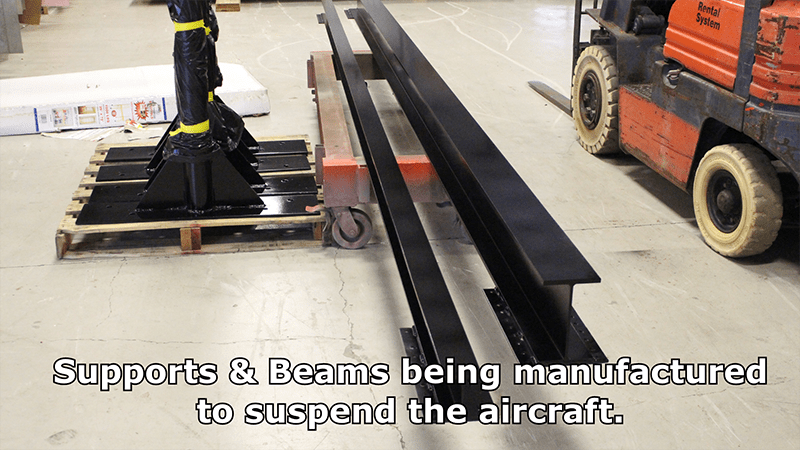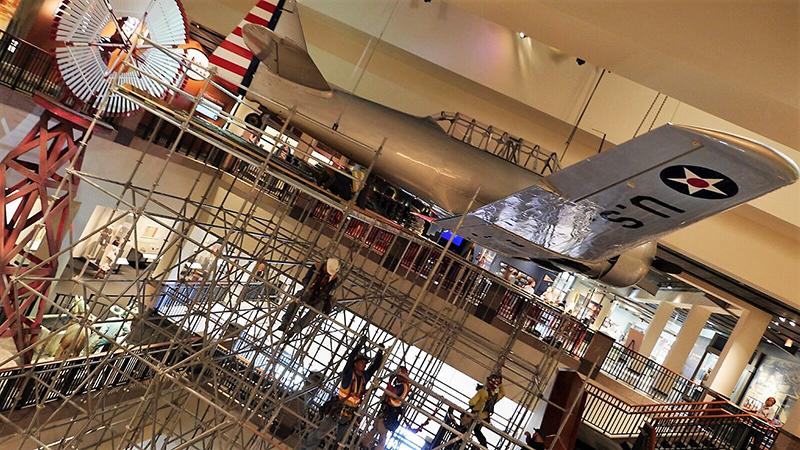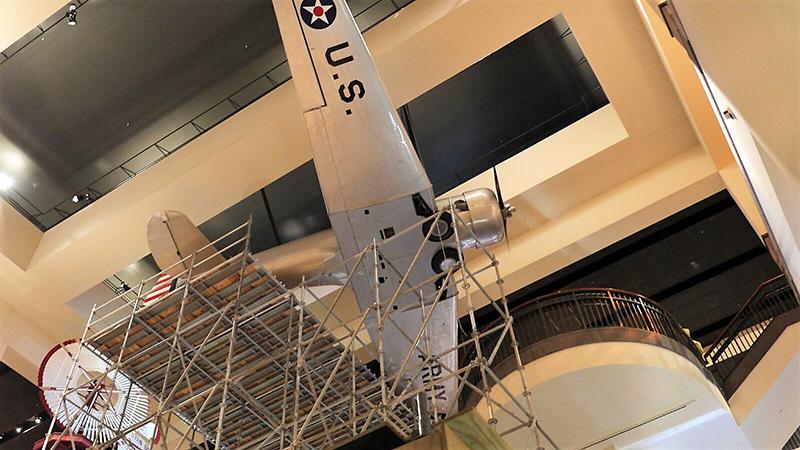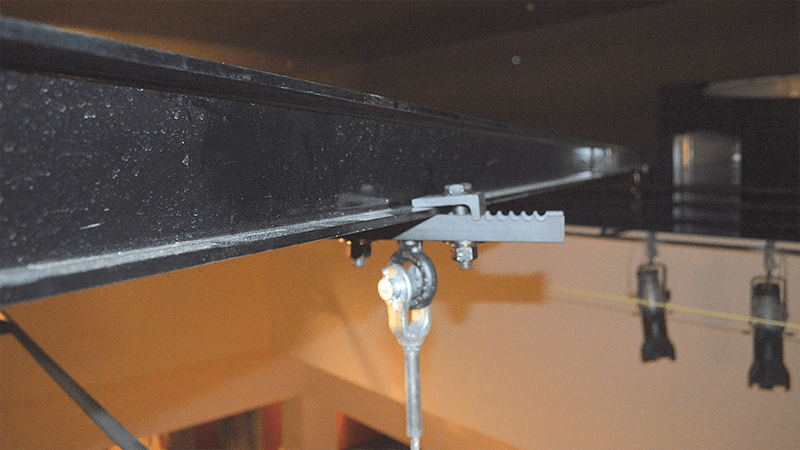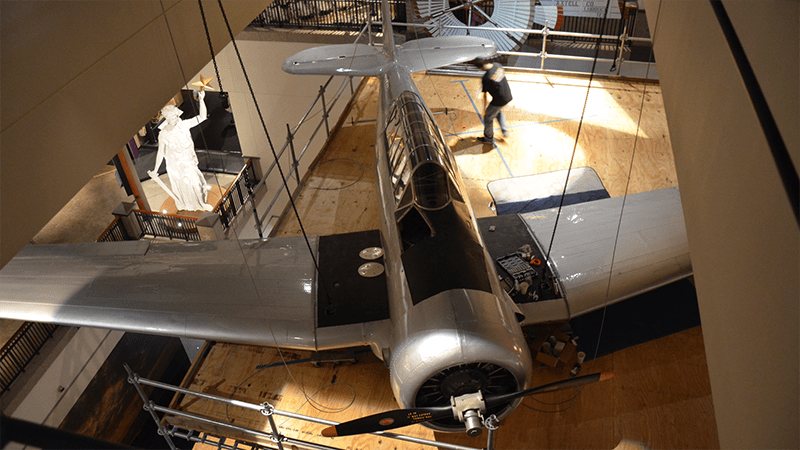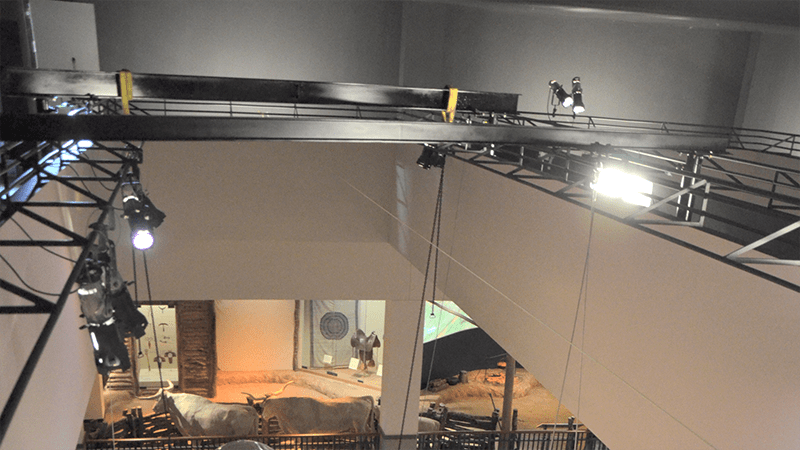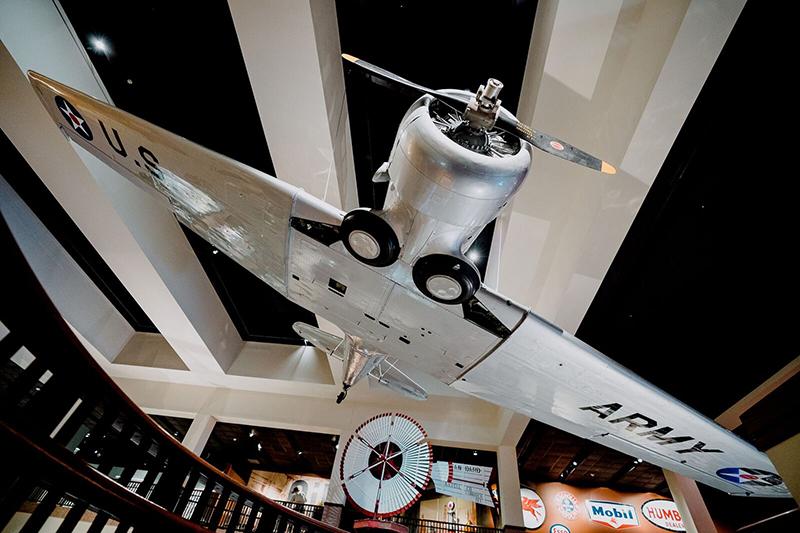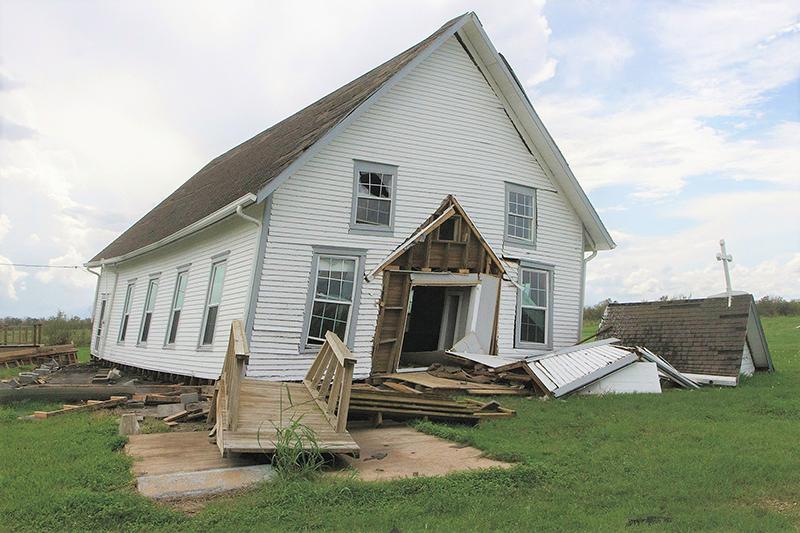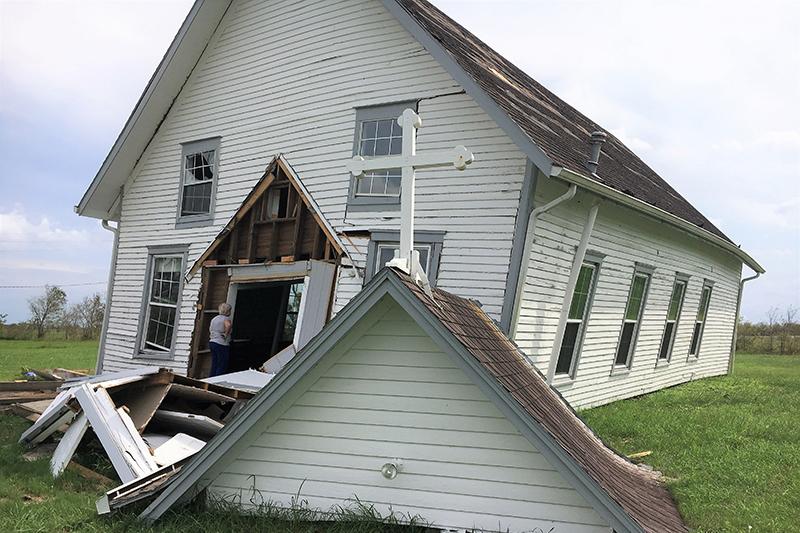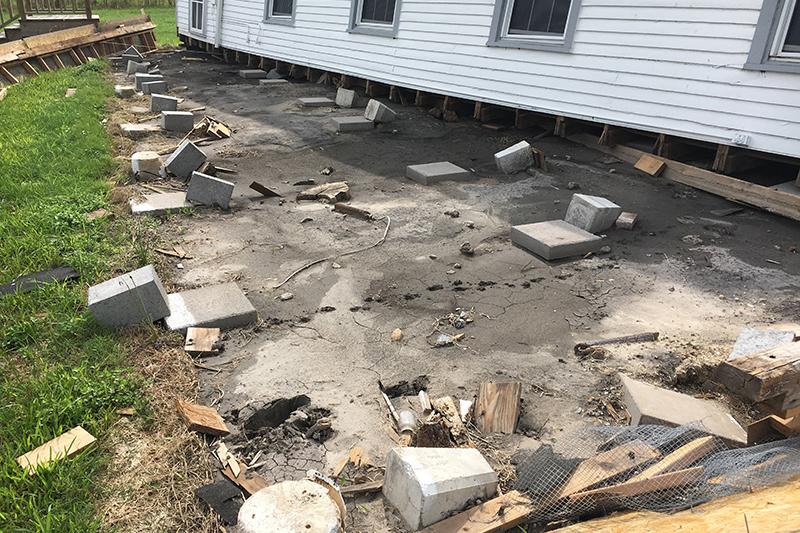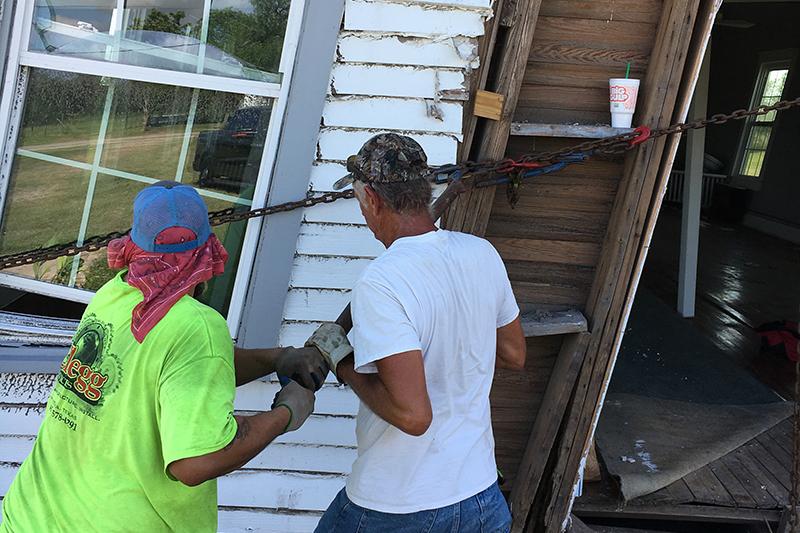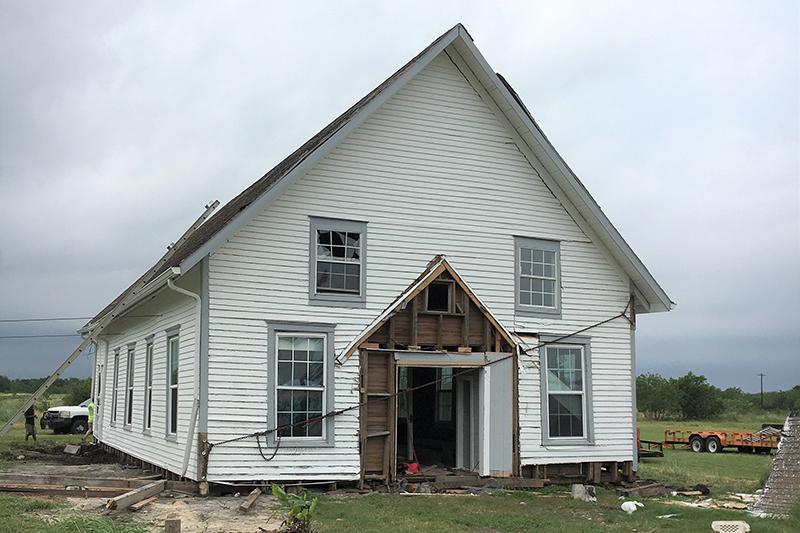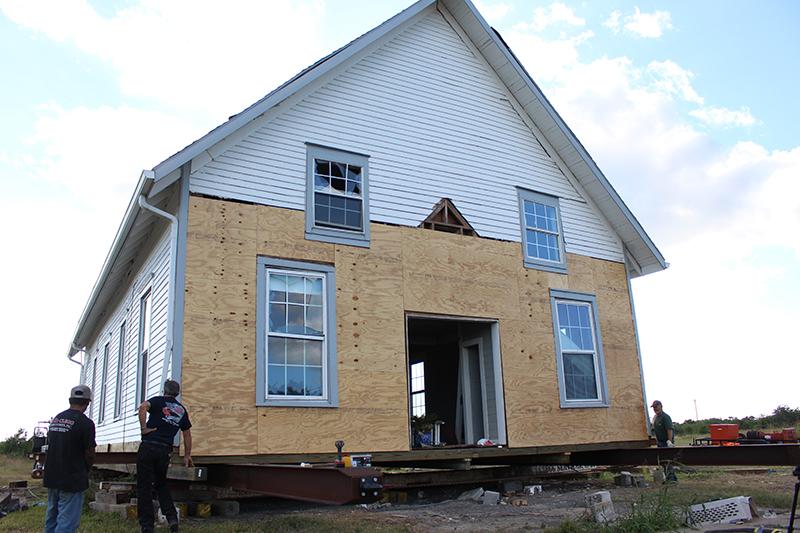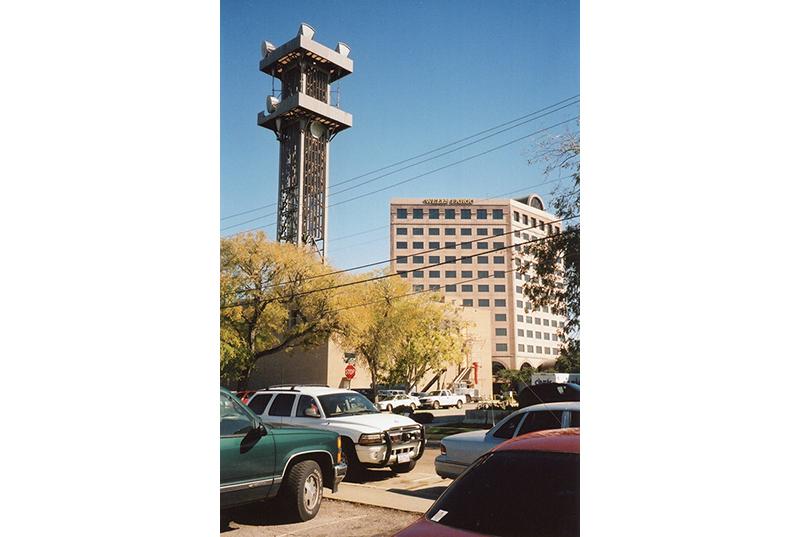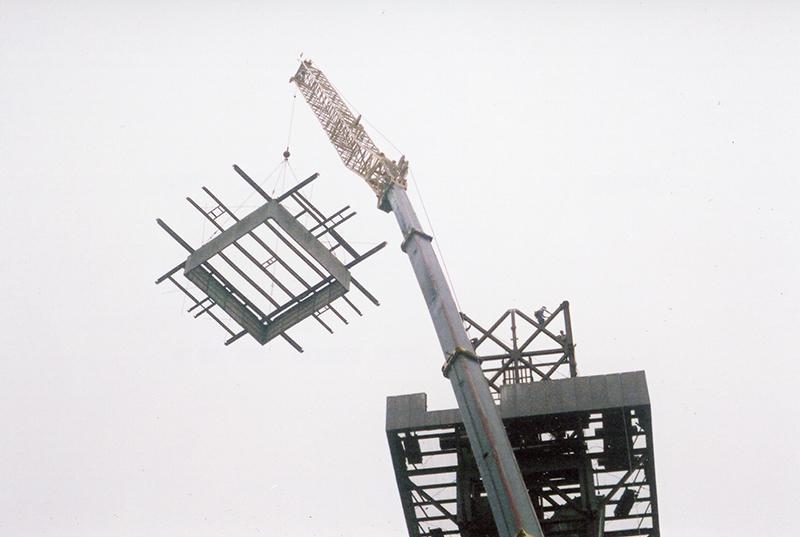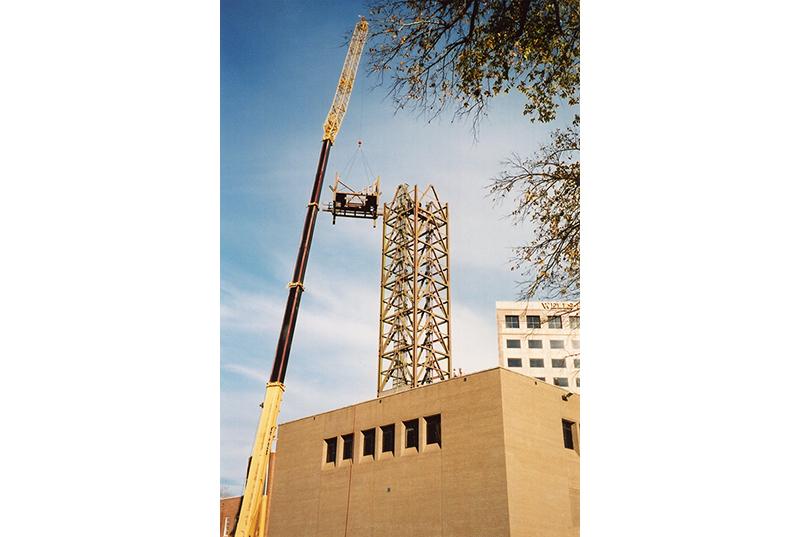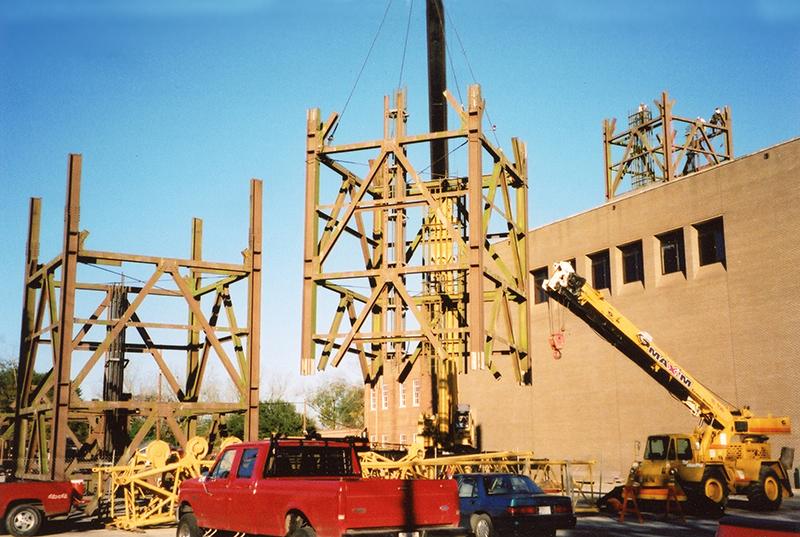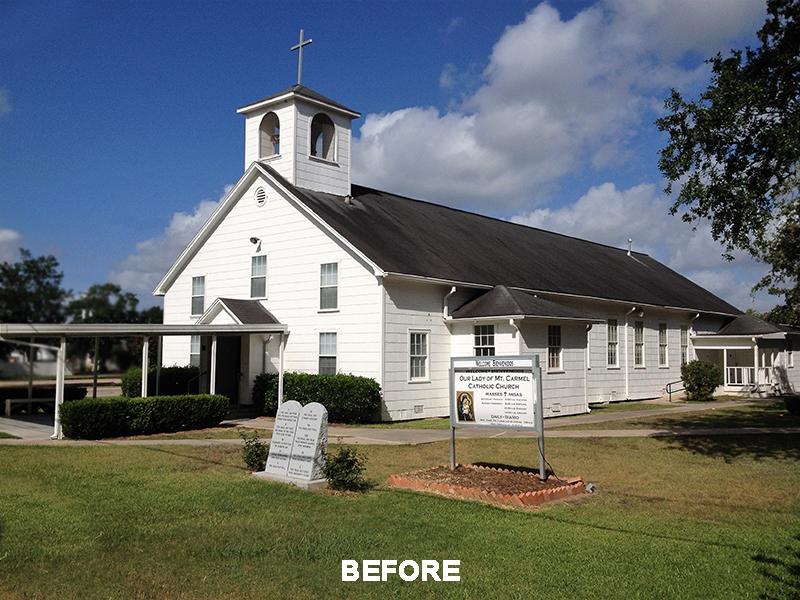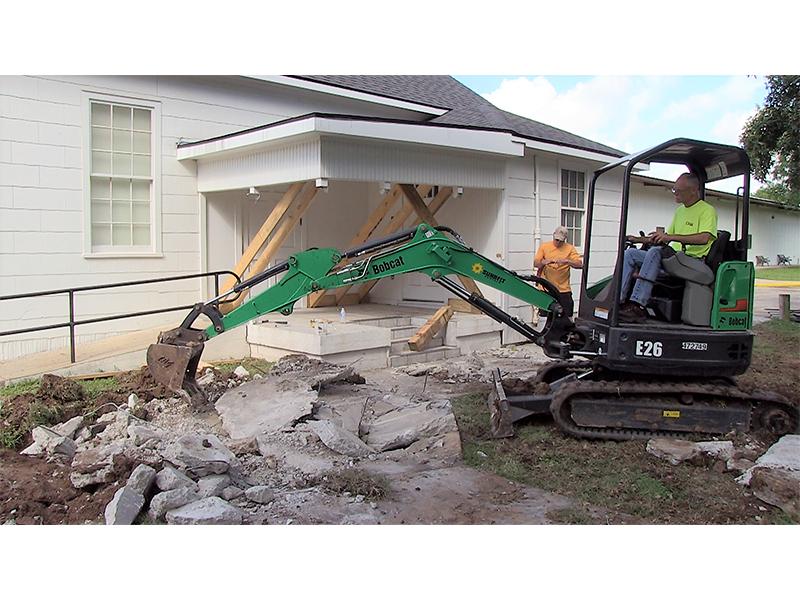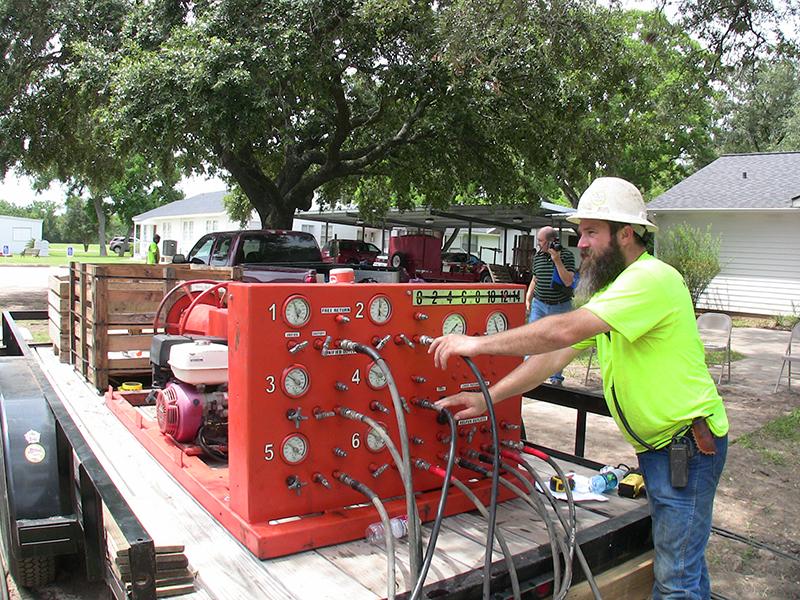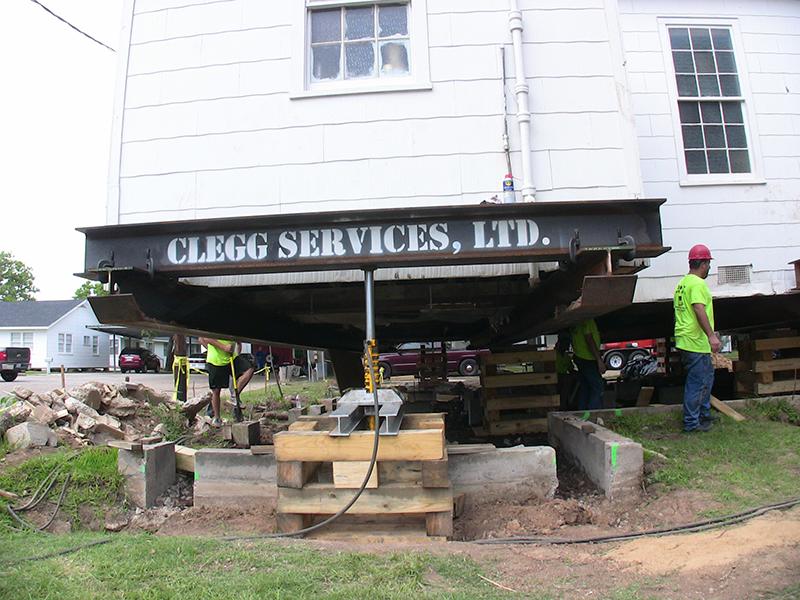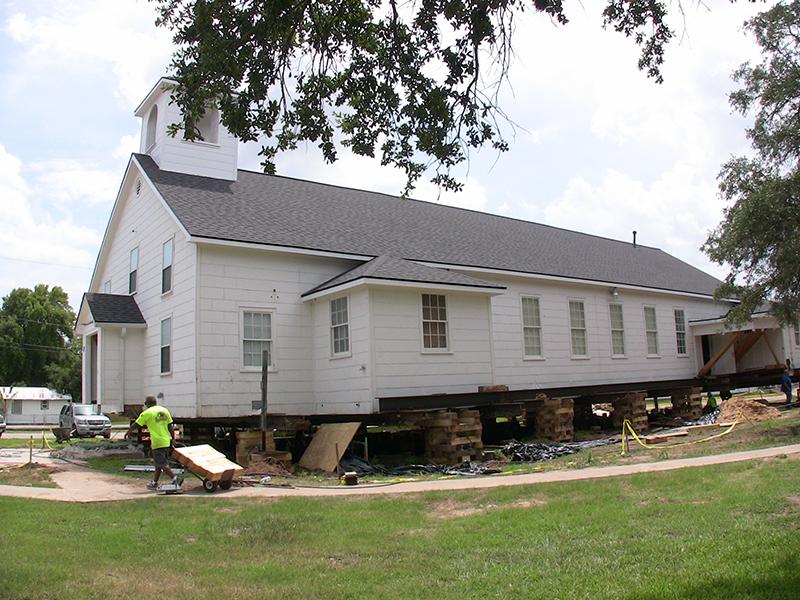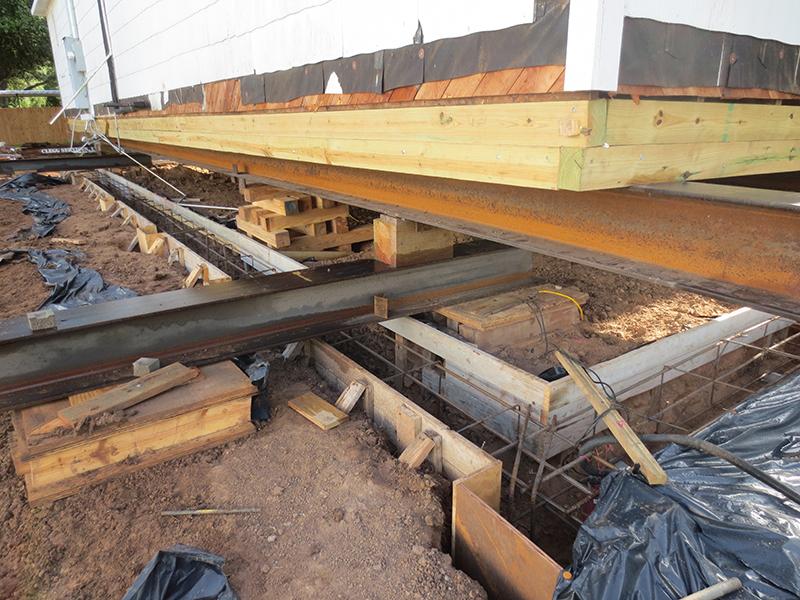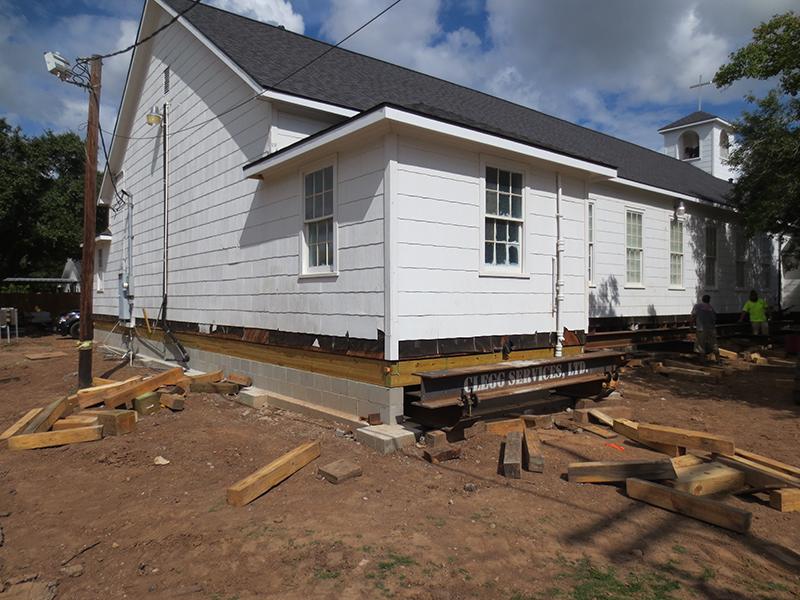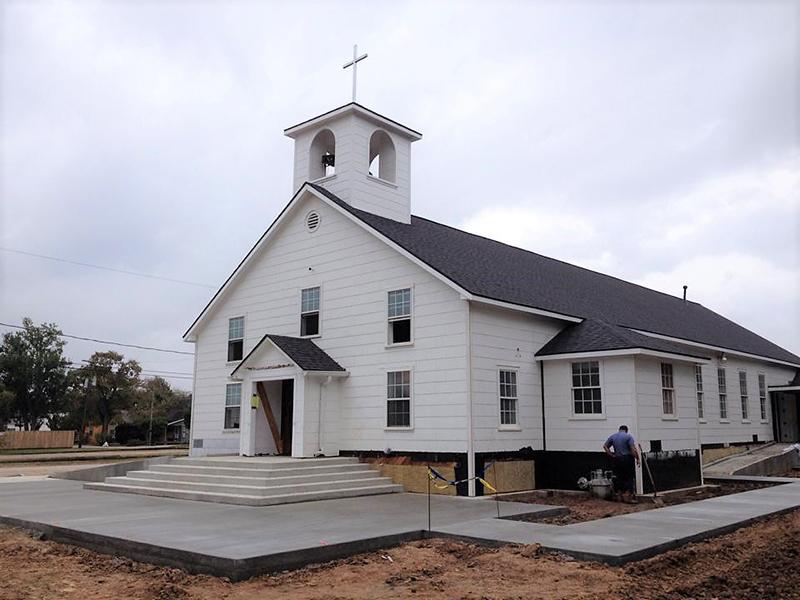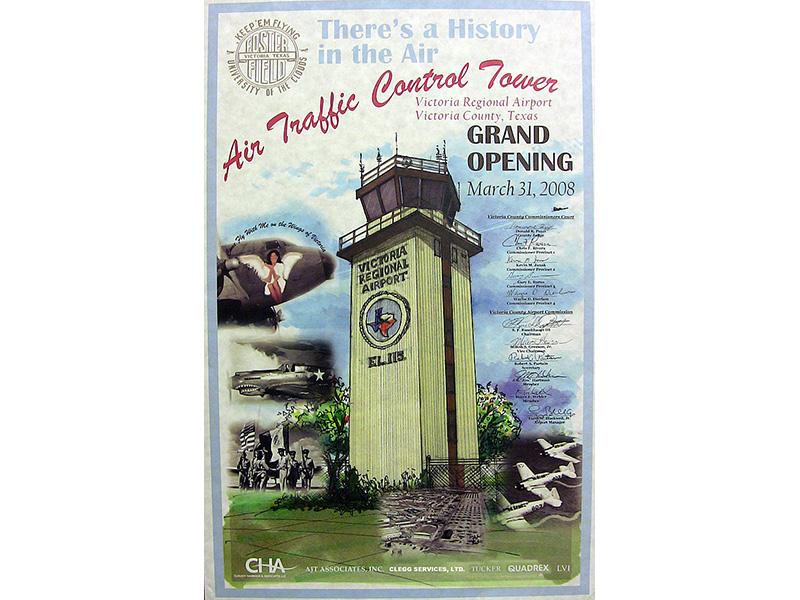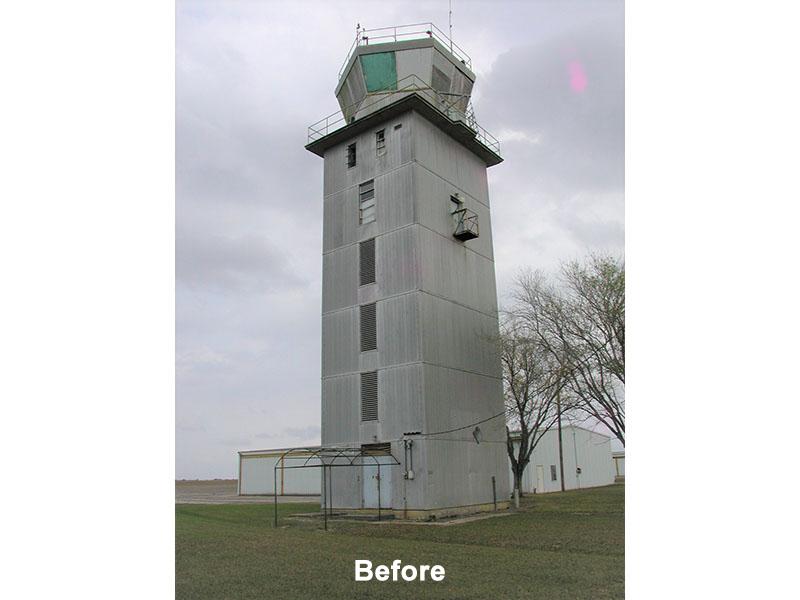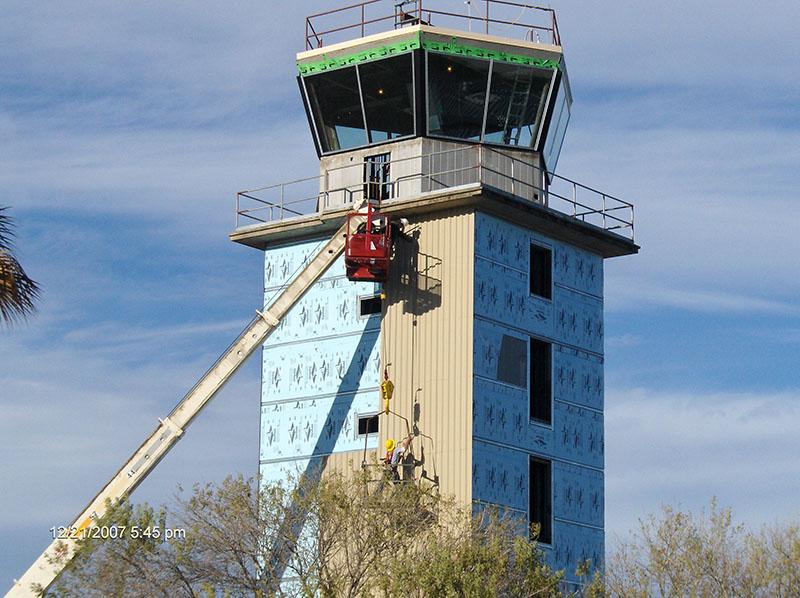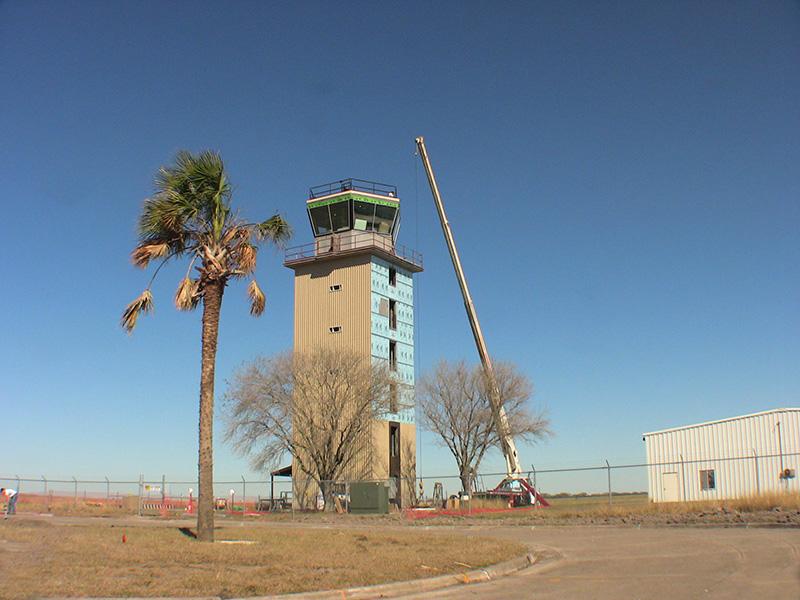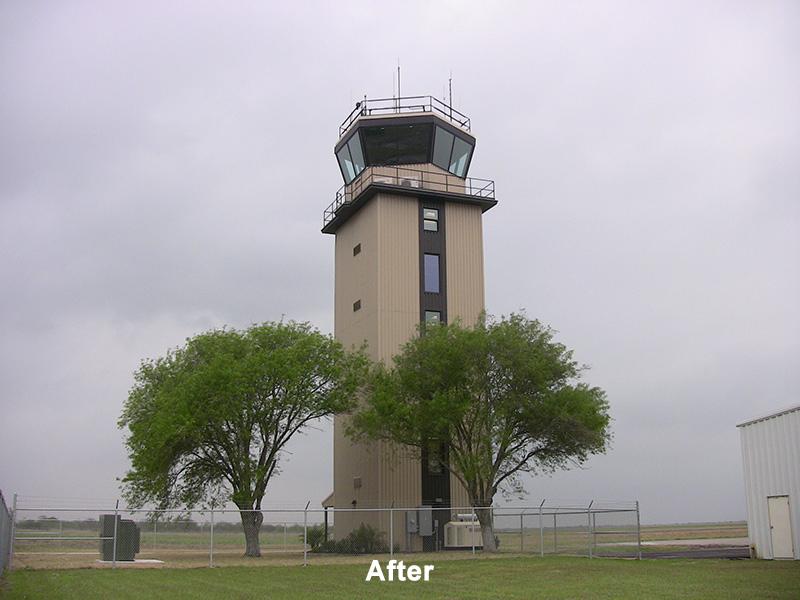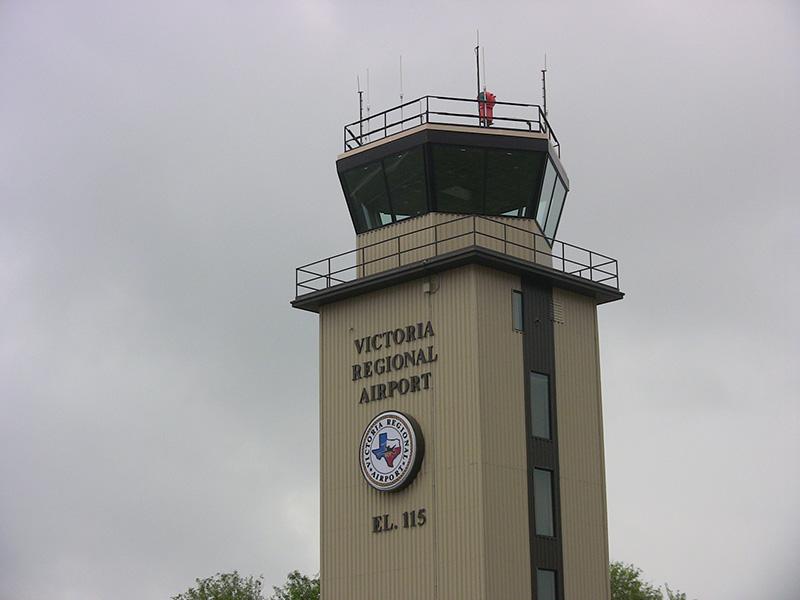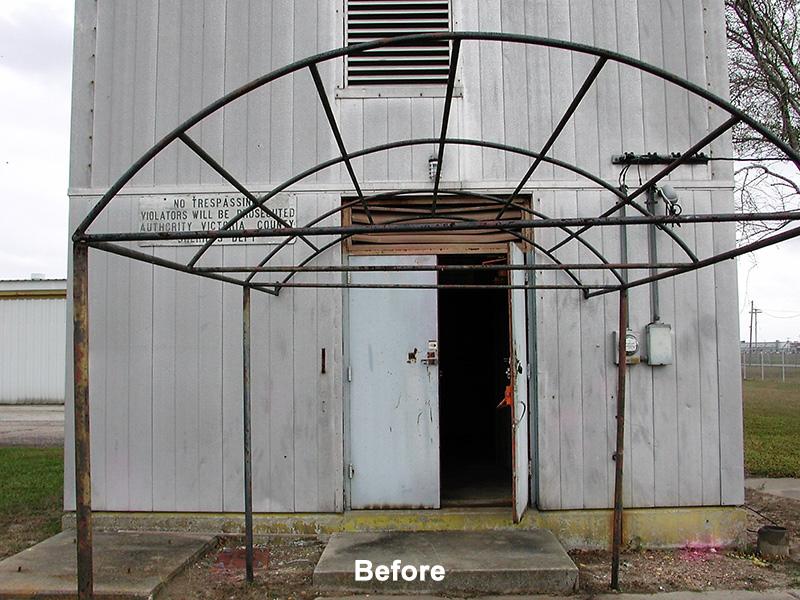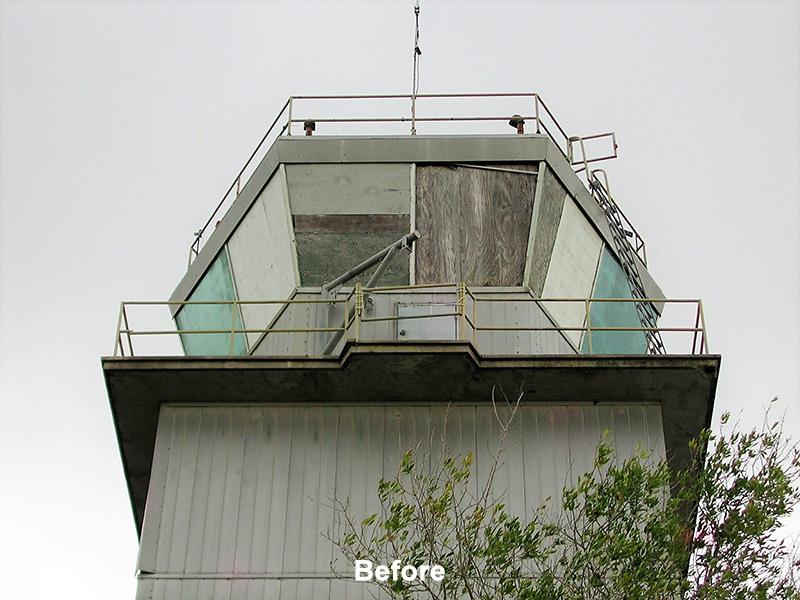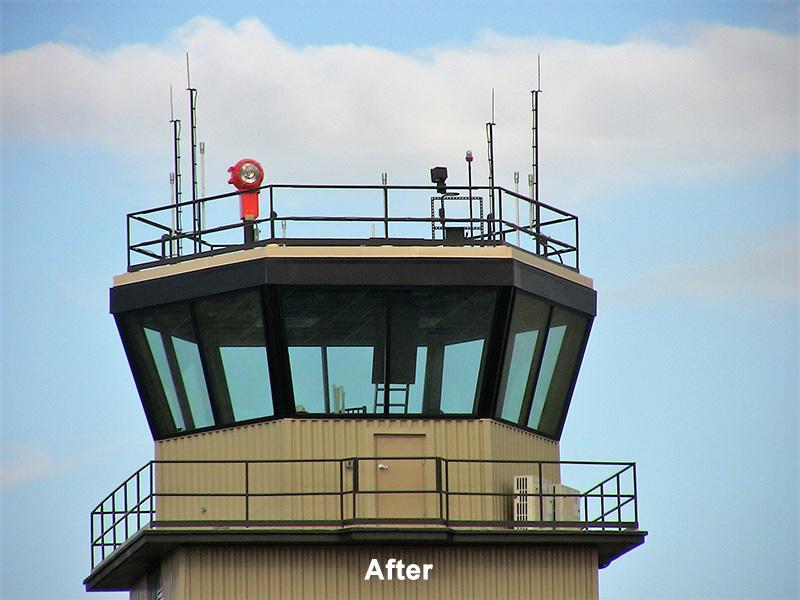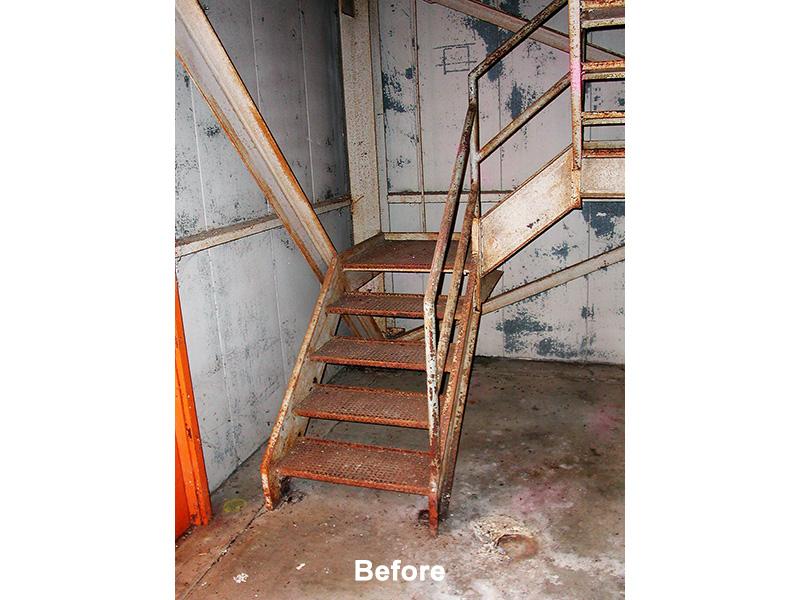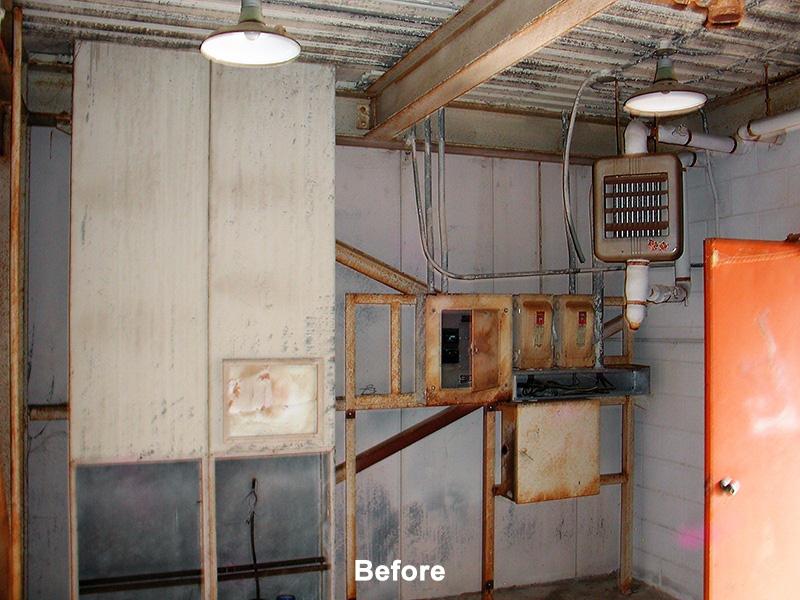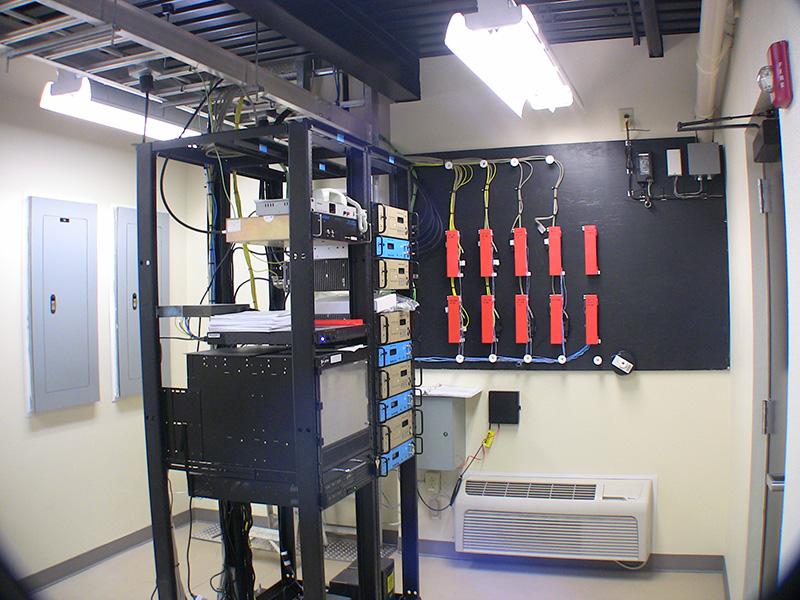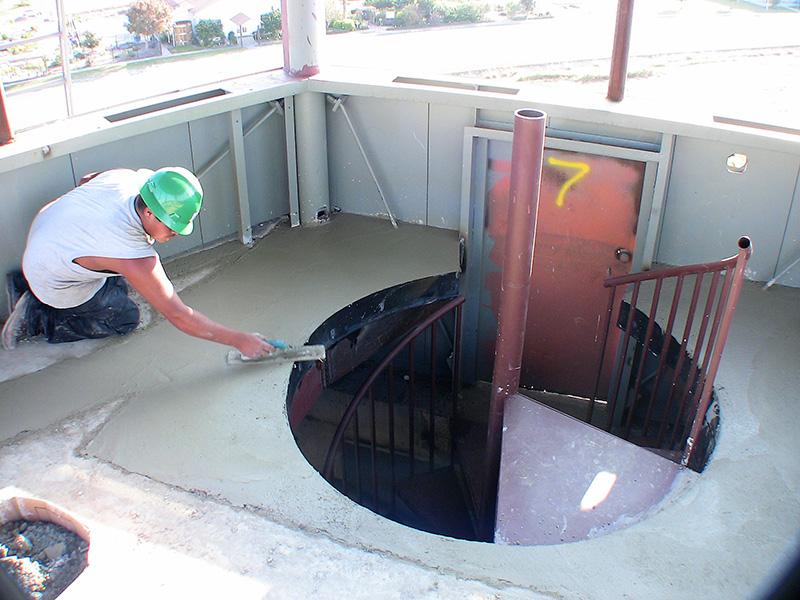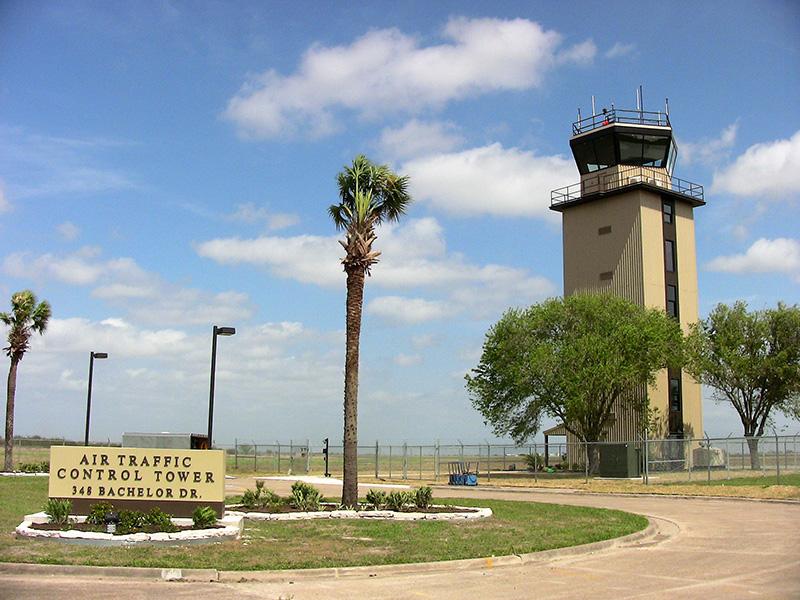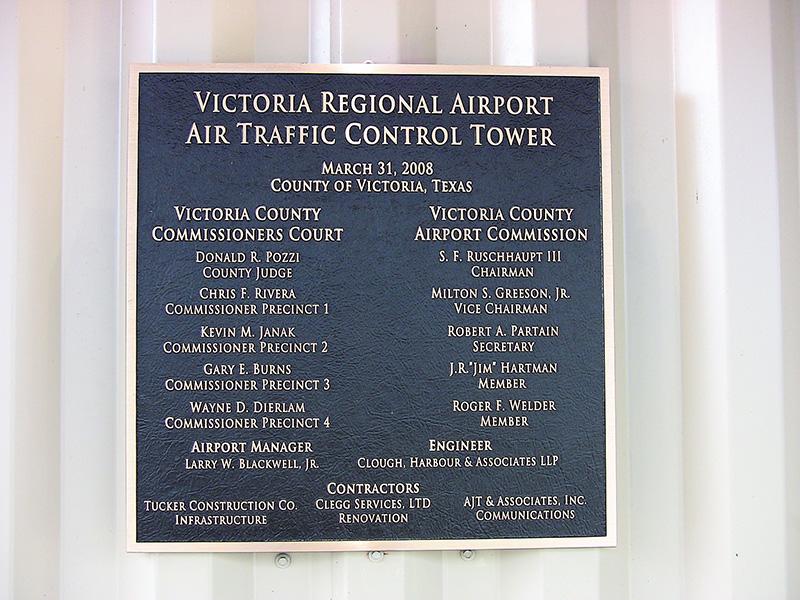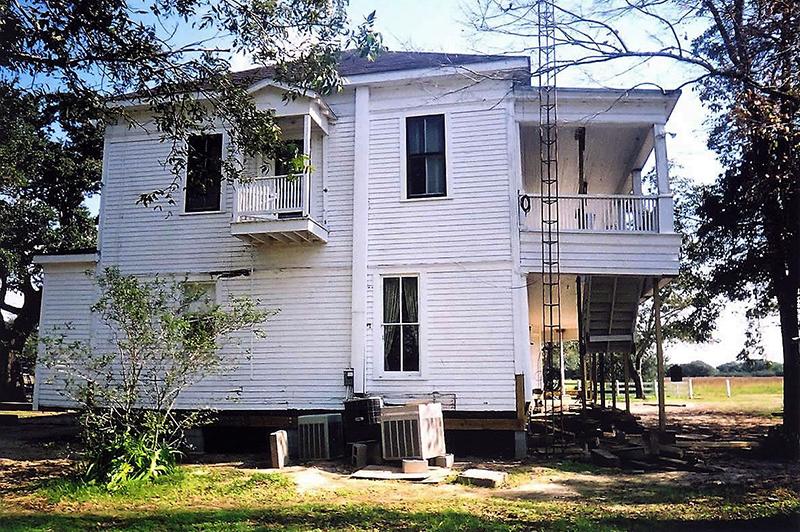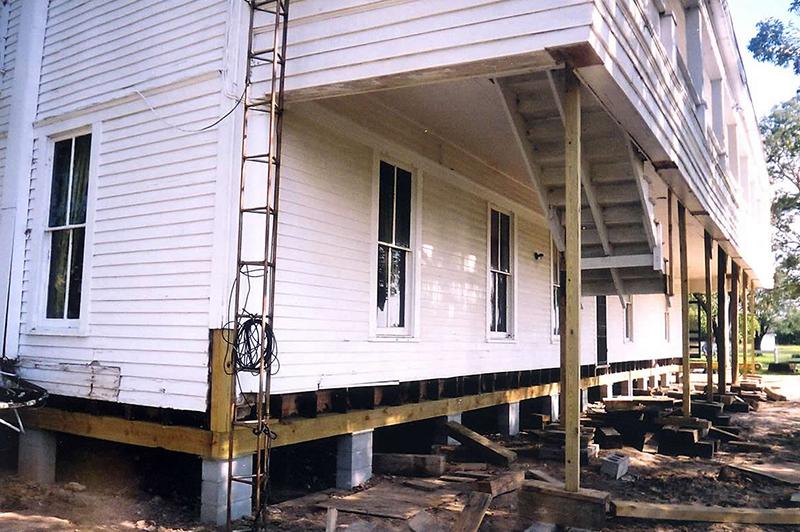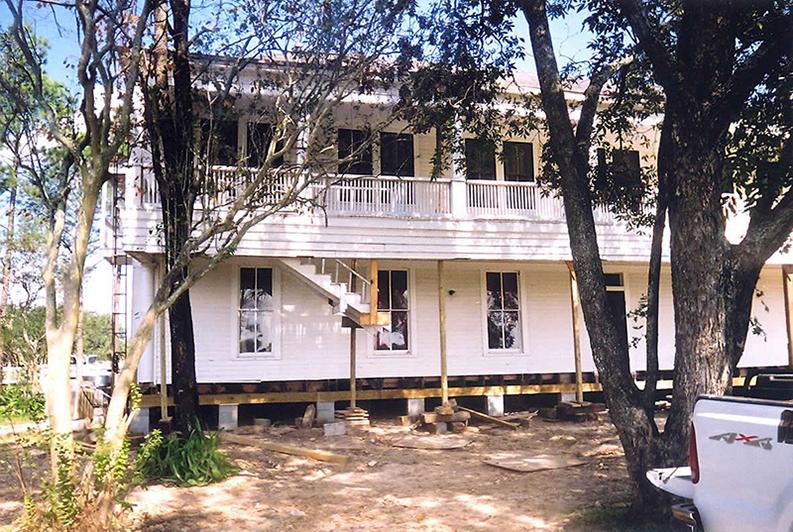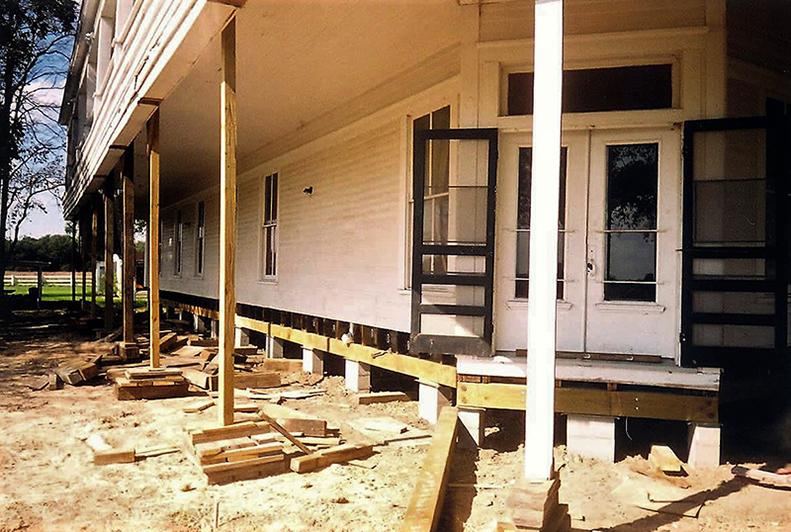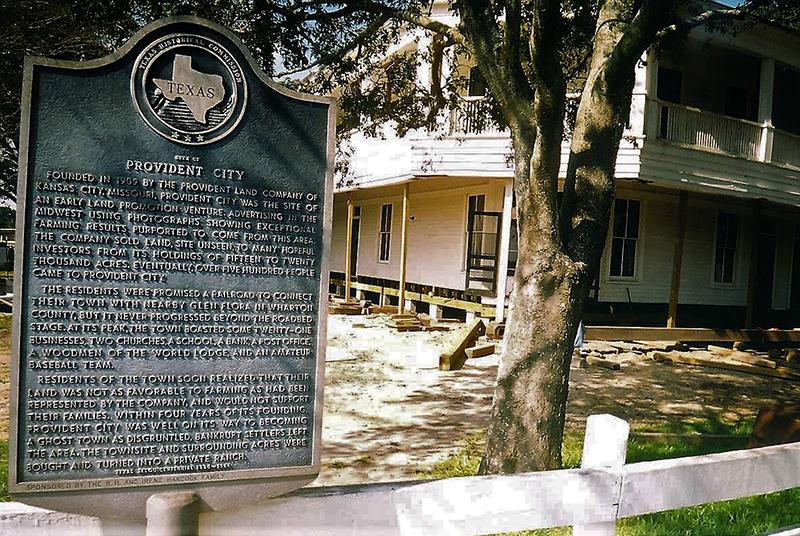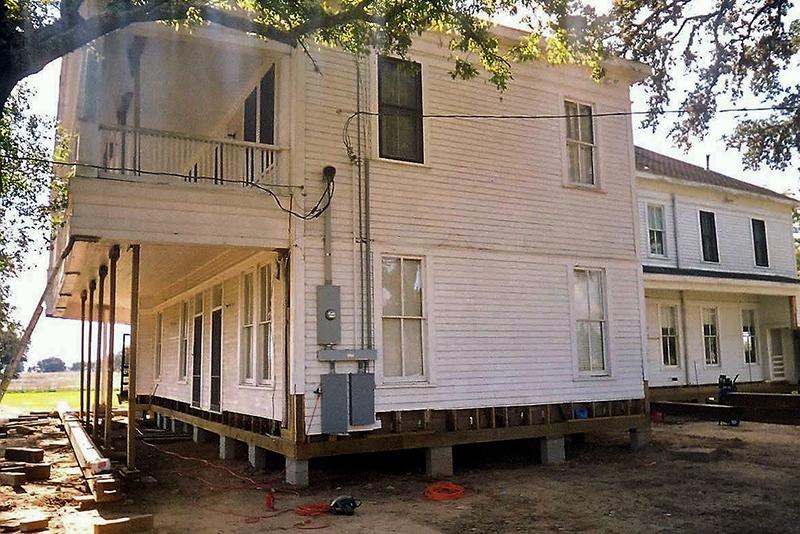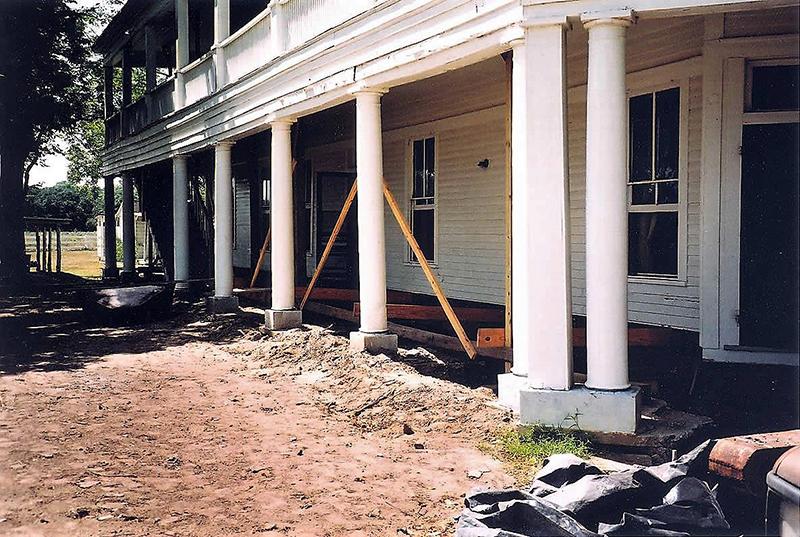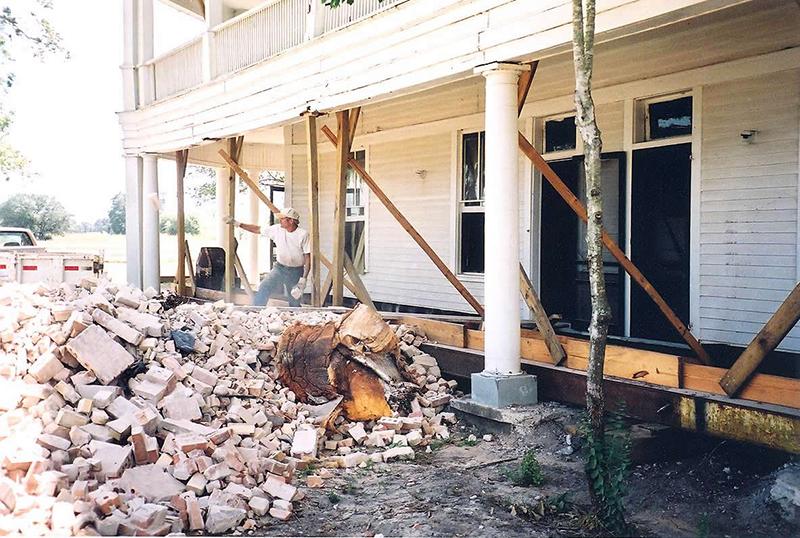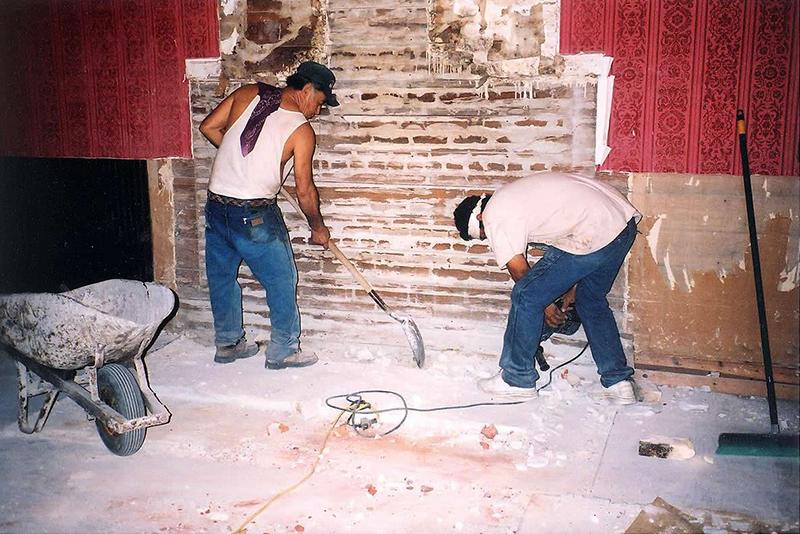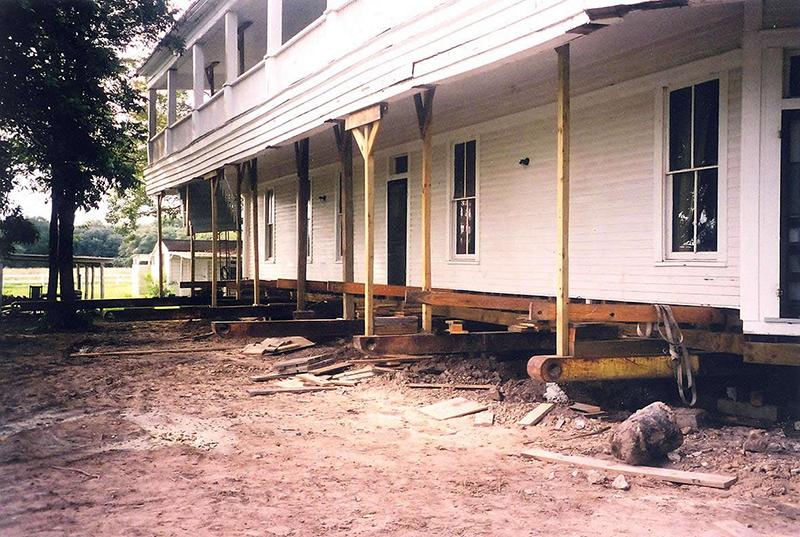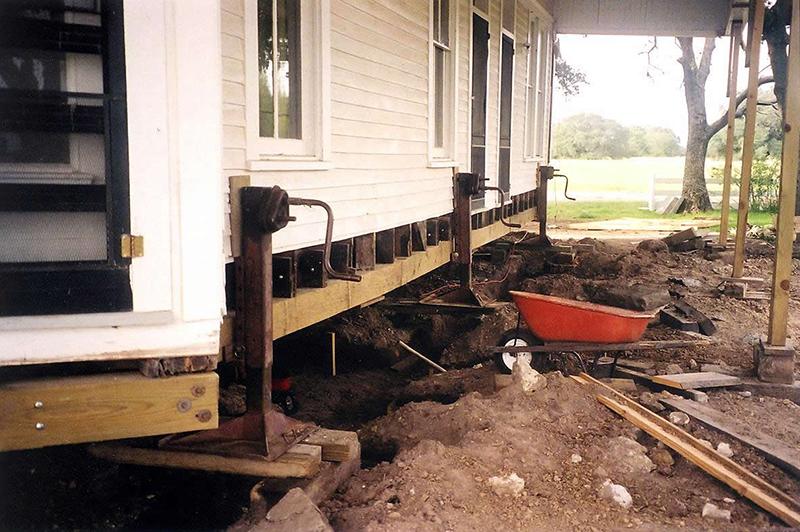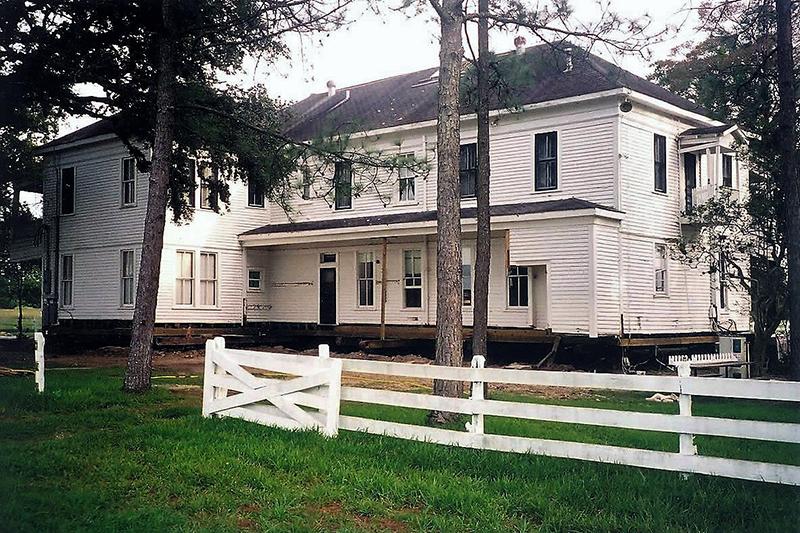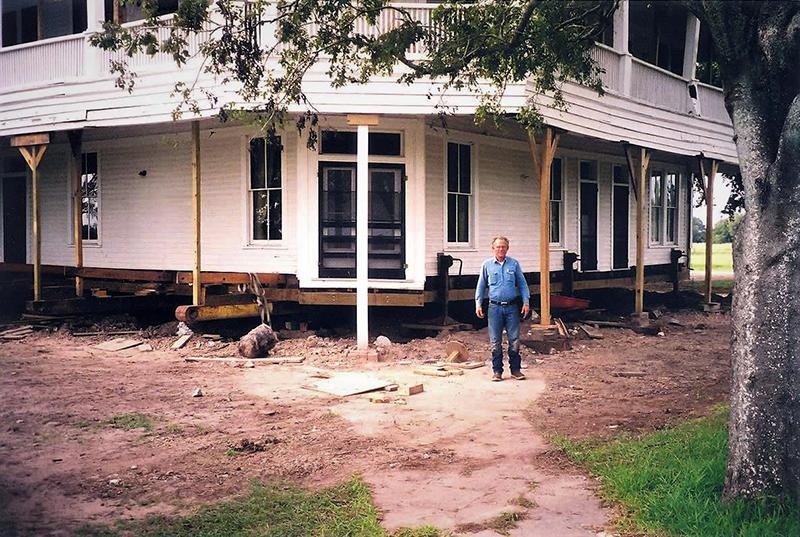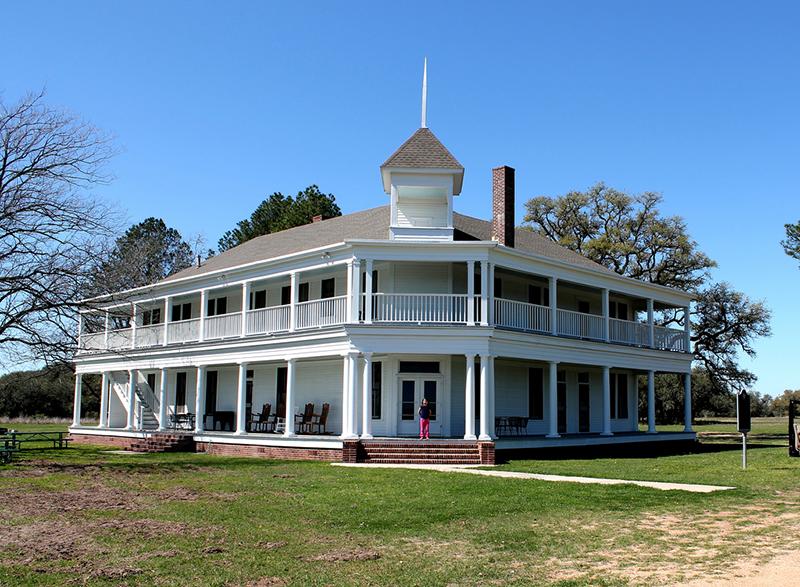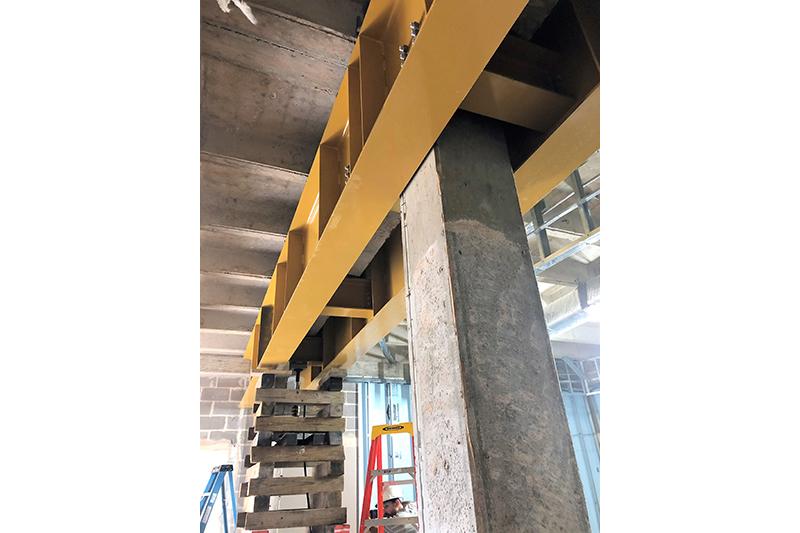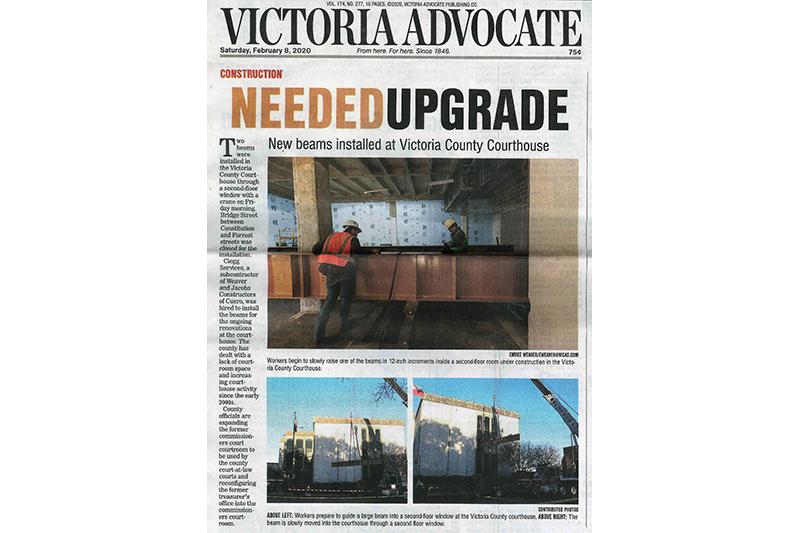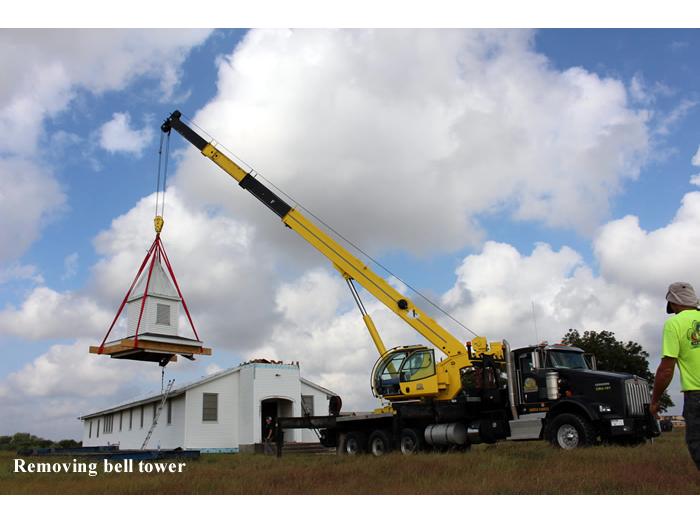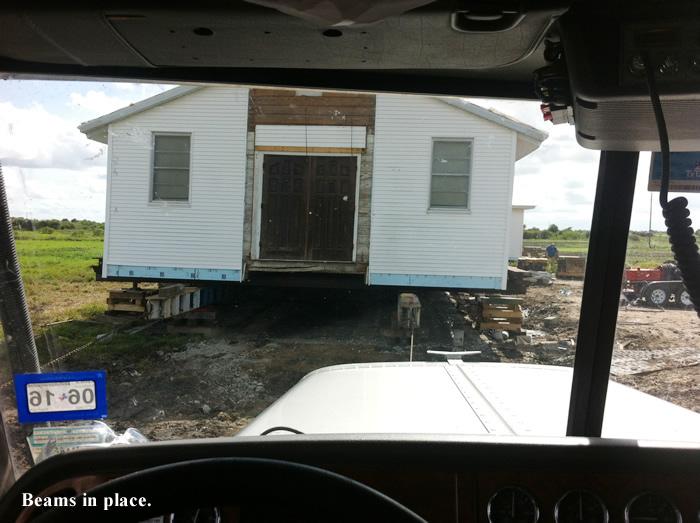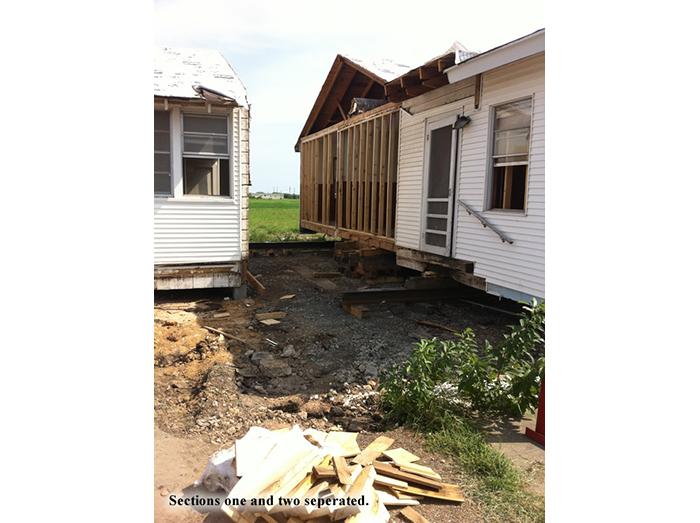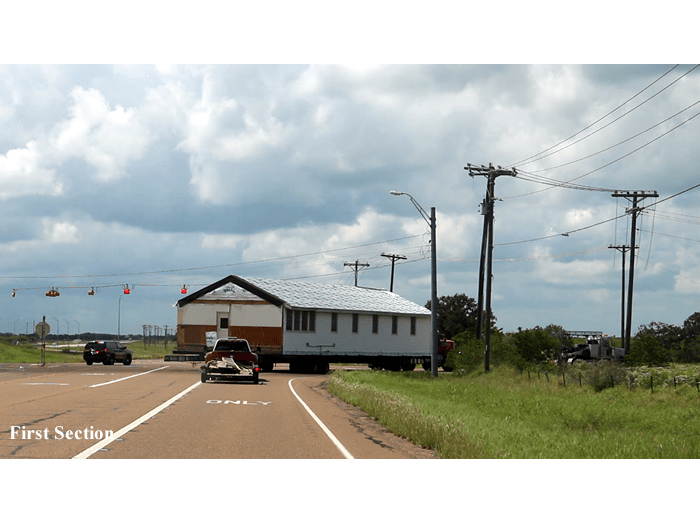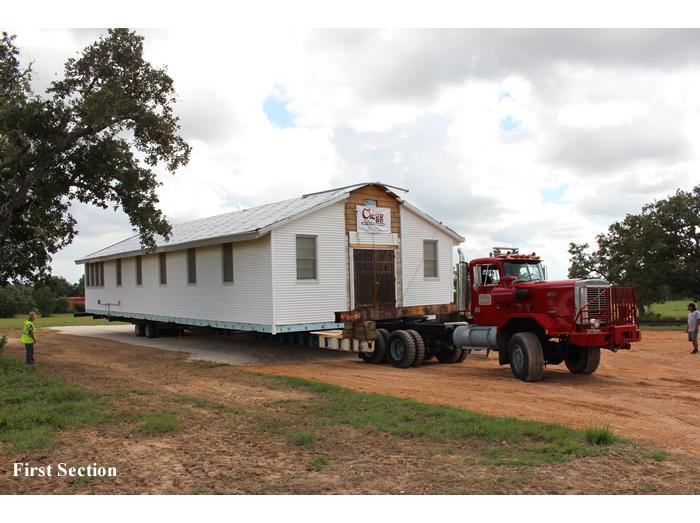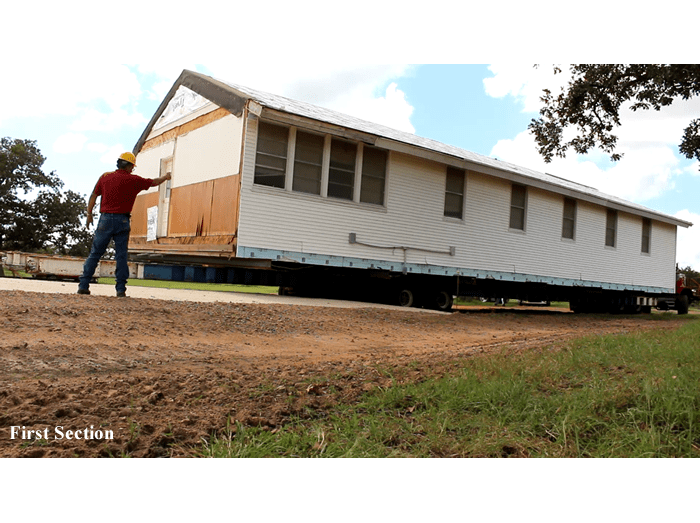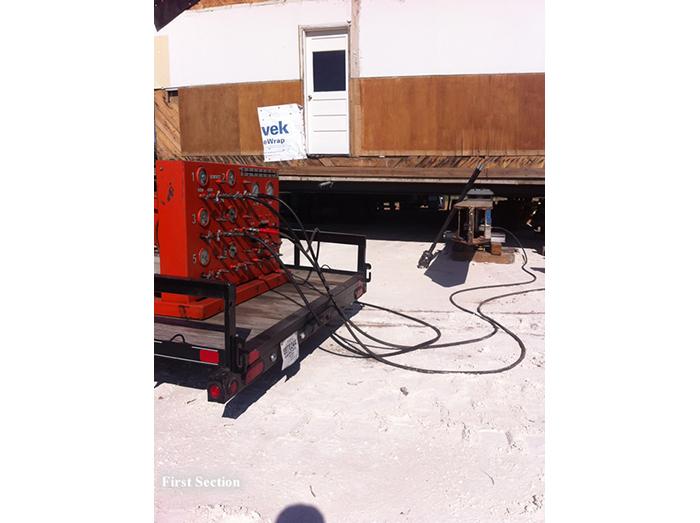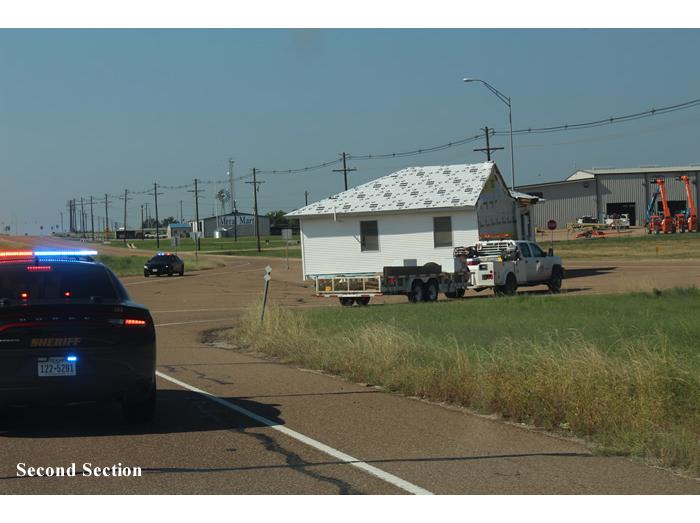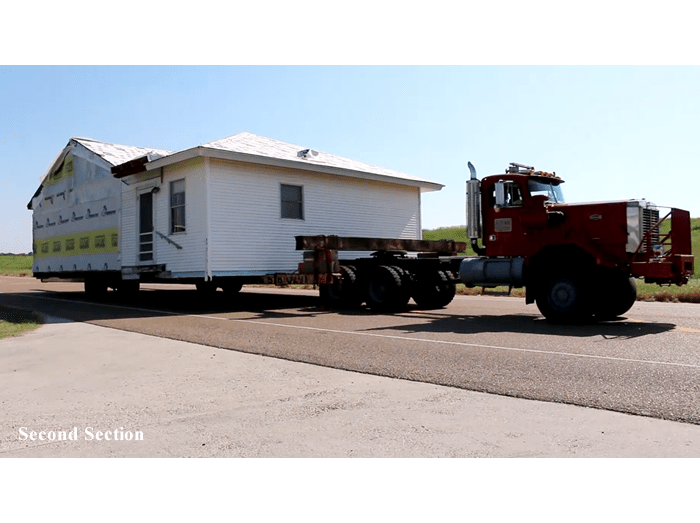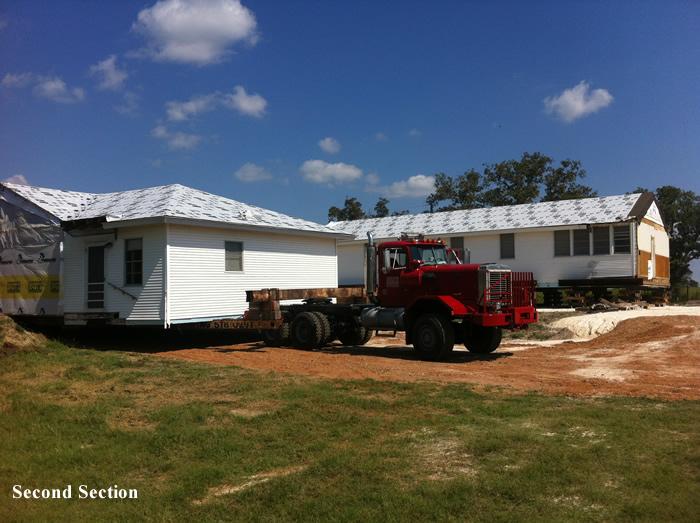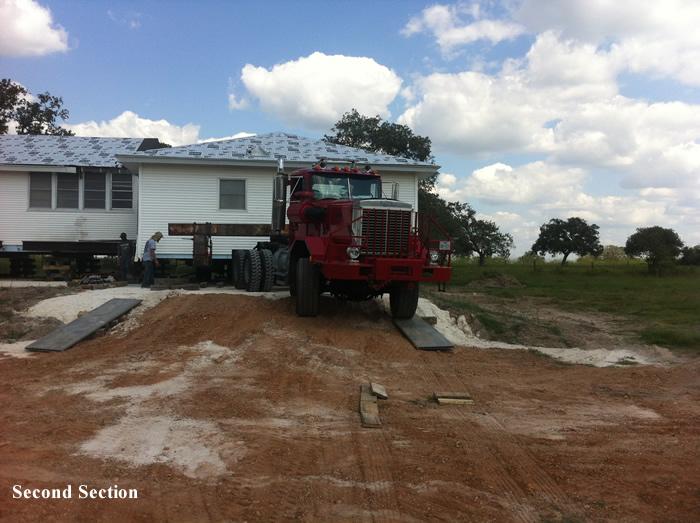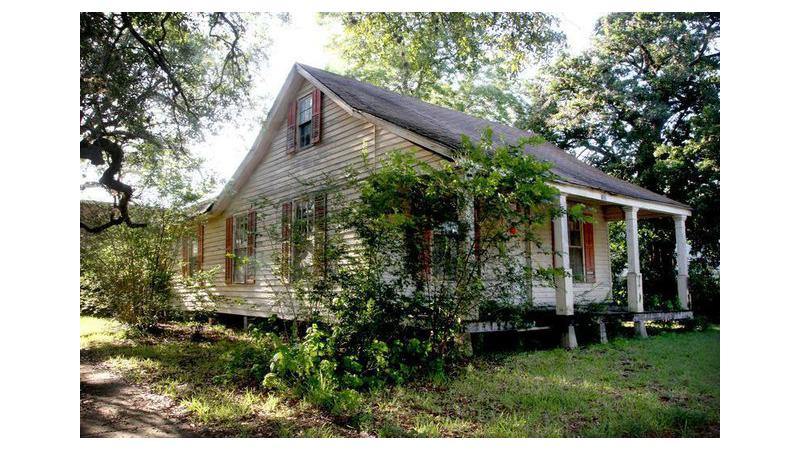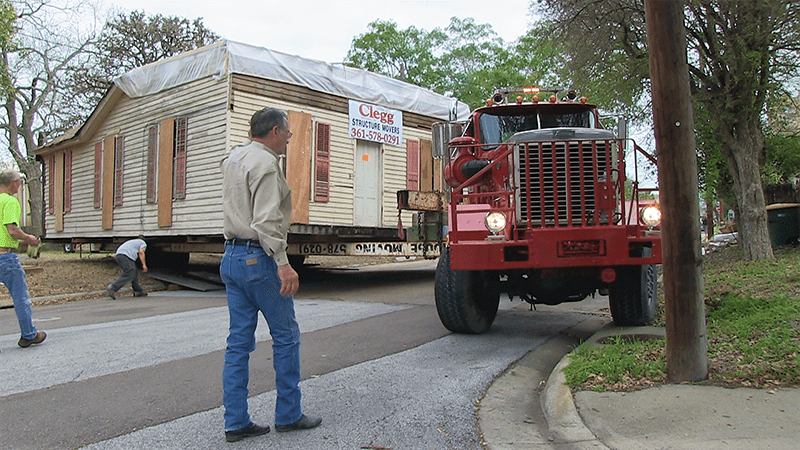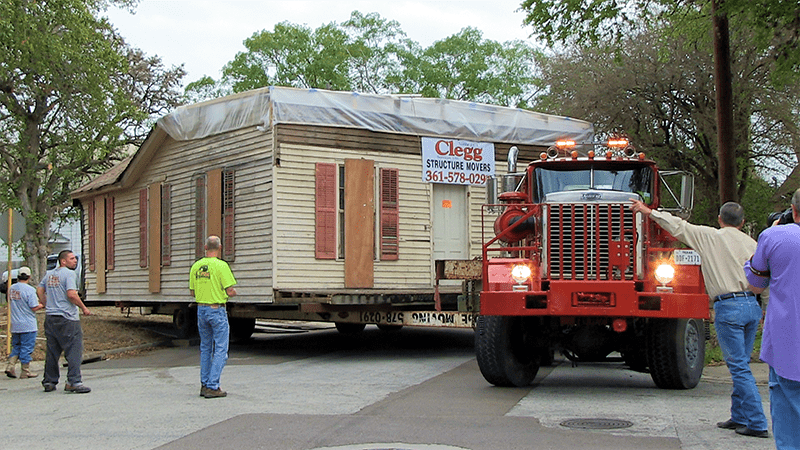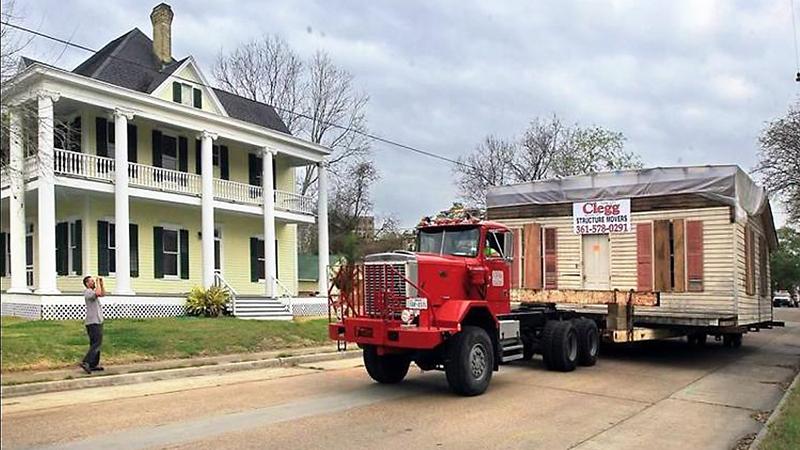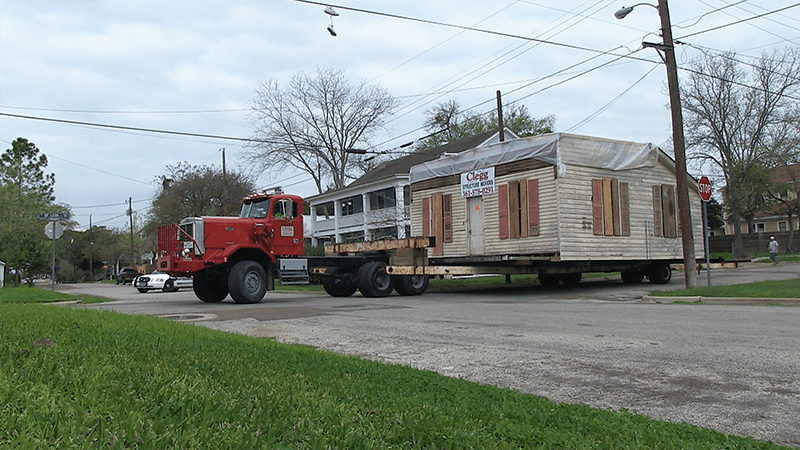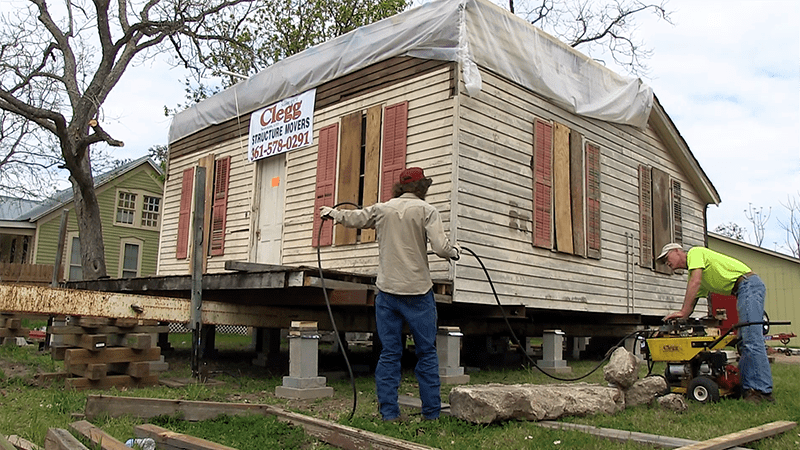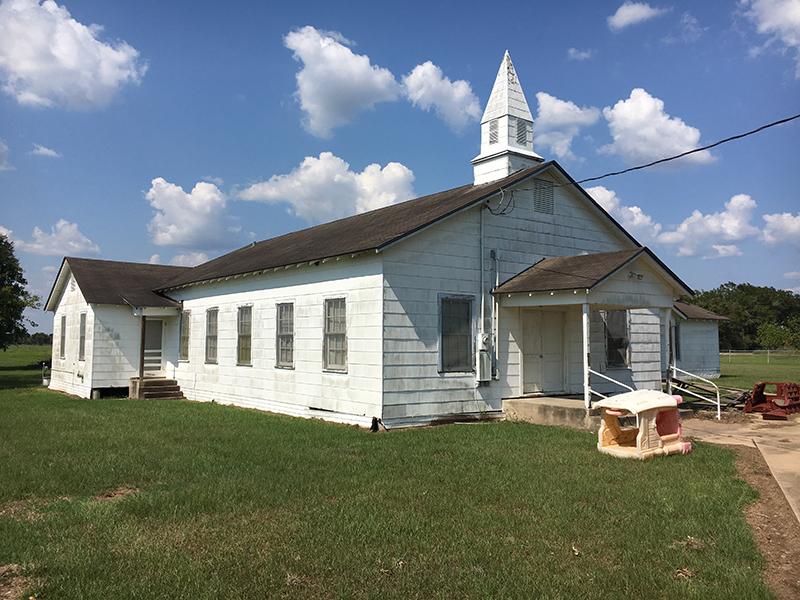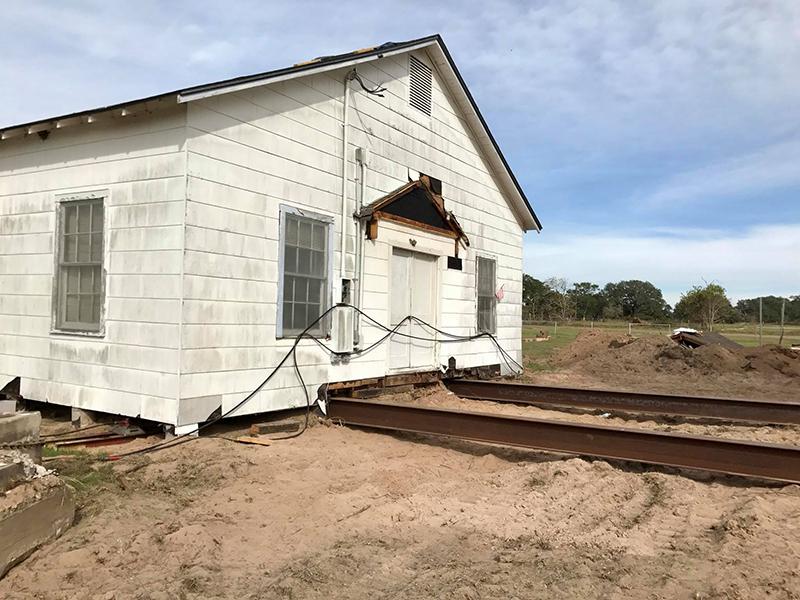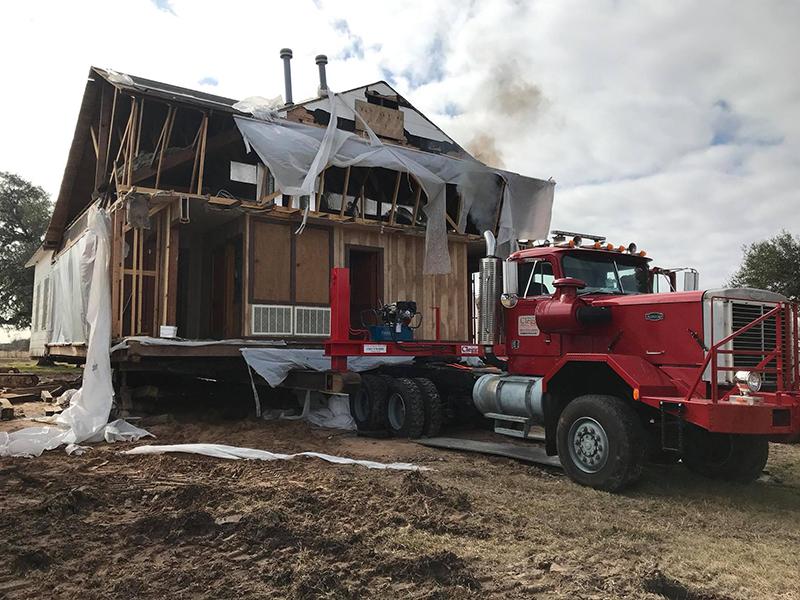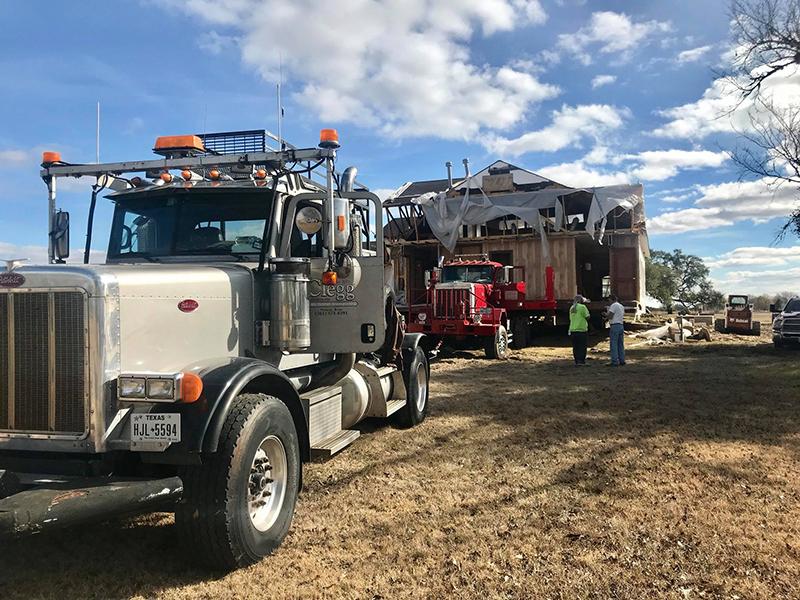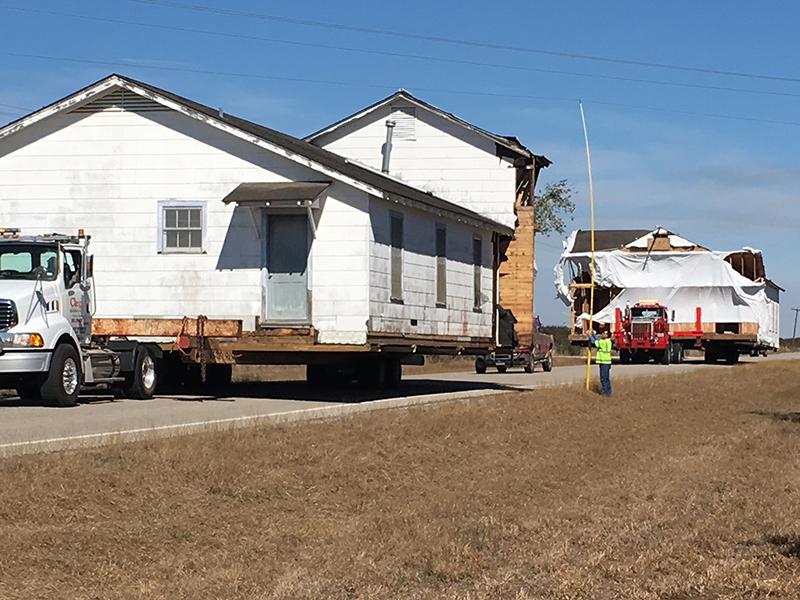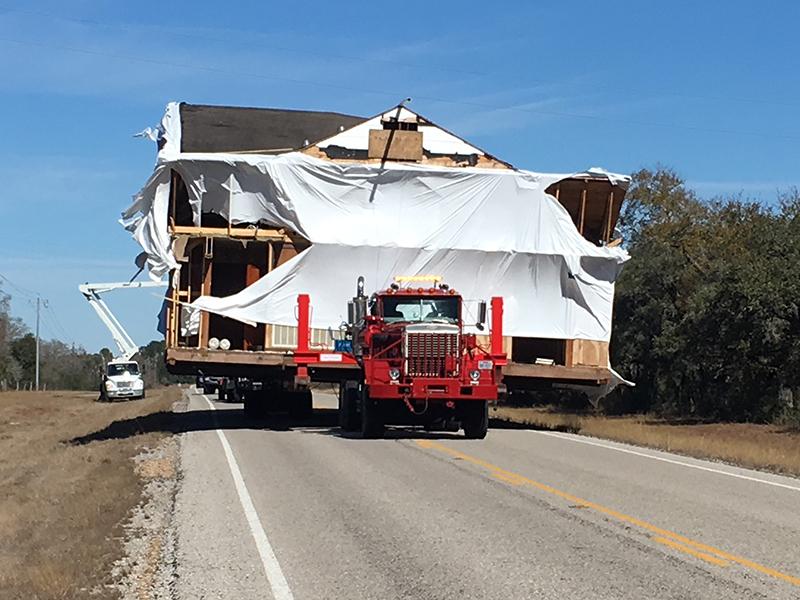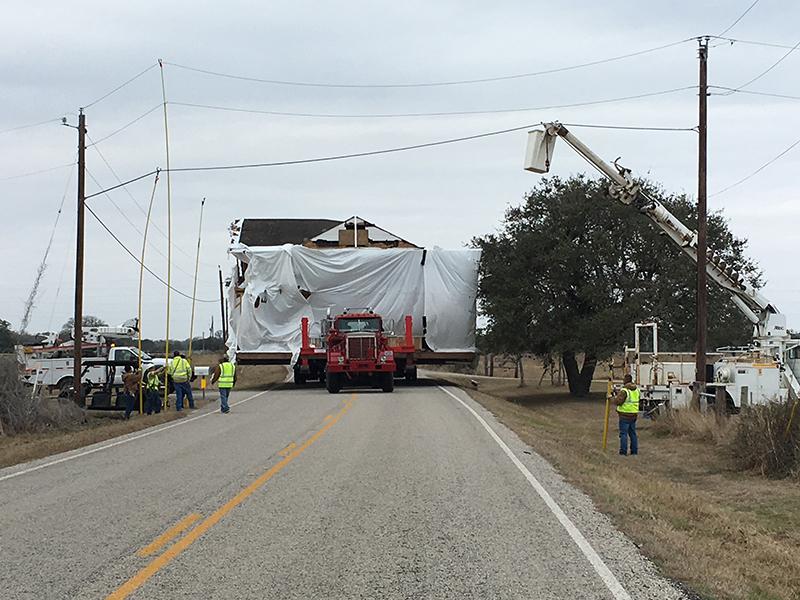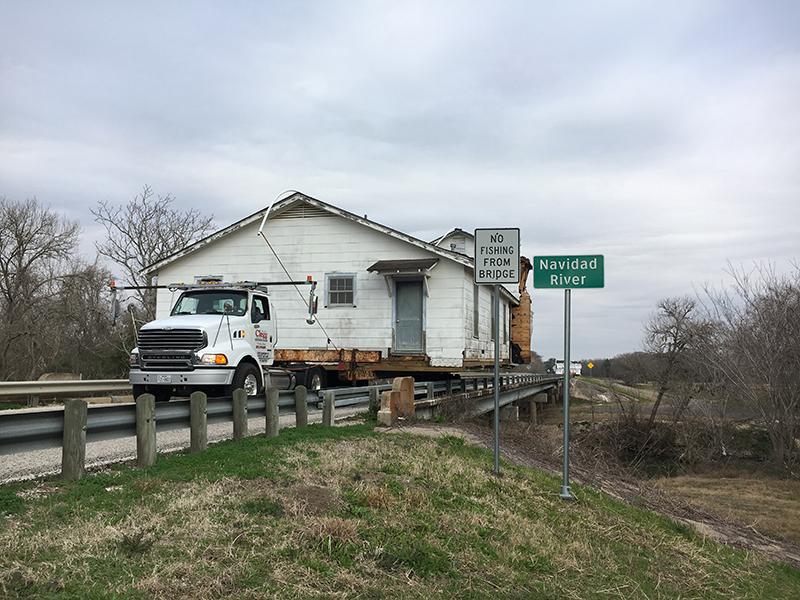Moving a 150 Year Old Farm House by John Clegg
Lafitte Hotel Relocation & Restoration
When The Lafitte Hotel in Seadrift Texas burned on Sept. 26, 2005, Calhoun County people were devastated. Many had stayed there, been married there, or just had fond and vivid memories of the place.
Shortly after, Judy Clegg bought the hotel. John Clegg and his team of expert structure movers dismantled the upper floors and moved the main structure to its new home in Mission Valley near Victoria, Texas.
Today with a full restoration, and renamed The Spirit Inn of Mission Valley, the hotel is now used as a unique special events center for church groups, corporate retreats, weddings and more.
Clegg Services Moves 16th Century La Belle Shipwreck To Final Location
In 1995, the Texas Historical Commission found the remains of La Belle and excavated the ship in 1996-97. Over 1.6 million artifacts were found including the bottom third of the hull, which was dismantled into over 350 individual timbers. The large size and the vast quantity of hull wood presented a huge logistical problem for Transponing the material to the Conservation Research Laboratory at Texas A&M University in College Station where preservation treatment was planned. This would require the very fragile limbers to travel more than 150 miles by road.
John and Judy Clegg provided two trucks with Trailers to move some of the items to A&M.
Ultimately the preservation of the hull look 17 years, and in 2014 the goal was to reassemble the treated timbers at the Bullock Texas State History Museum in Austin, Texas, The final home for La Belle. But this would require another 100 mile movement of the ship’s timbers. To continue reading this fascinating story view full article in .PDF file.
AT-6 "Texan" Aircraft Suspension For Museum Exhibit
Clegg Services designed, engineered, manufactured and installed a suspension system for an AT-6 “Texan” aircraft at The Bullock Museum in Austin, Texas.
To continue reading more on this project, view the full article in .PDF file.
Church Steeple Manufactured & Installed - First Lutheran Church Victoria Texas
Clegg Industries manufactured a new steeple for the First Lutheran Church in Victoria, Texas.
Category 4 winds of Hurricane Harvey knocked over and permanently damaged the original 60-year-old wooden steeple.
New Church Steeple Features:
- 7 ft. 2 in. wide x 24 ft. tall
- Custom fabricated using original church blueprints
- Octagon shaped all aluminum structure covered with copper sheeting
- 6 ft. original steeple cross repaired and used on new build
101 Year Old Church Put Back Together After Hurricane Harvey
Aug. 26, 2017
101-year-old historic McFaddin church gets blown about 15 feet off its foundation, making the church lean at about a 30-degree angle during Hurricane Harvey.
Oct. 9, 2017
Clegg Services and Galveston-based McMillan Building Movers crew’s pulled the church with cables attached to a truck to straighten it out as much as possible and wrapped a chain around the structure to secure it together.
Oct. 10, 2017
The crew slowly lifted the structure inch by inch with pump jacks and air bags. When the church was about 4 feet off the ground, the crews started doing enough structural repairs so the church could be moved. The fl oors and walls were reinforced.
Oct. 30, 2017
Crews with Clegg Services and McMillan Building Movers pulled the church back onto its foundation with construction vehicles chained to the structure. Crews put steal beams under the structure with Ivory soap between them so the church would slide back into position.
Early Nov. 2017
The crew then worked on more structural repairs and strapping the structure to its foundation.
The next step for the church is to hire a construction crew to do exterior finishing and interior repairs.
Southwestern Bell Tower Demolition
Clegg Services was commissioned to dismantle the Southwestern Bell tower in downtown Victoria, Texas in 2001.
Made up of 400,000 lbs. of steel and 250 ft. tall, it was the tallest structure in Victoria for many years and supported numerous microwave and radio antennas.
Years after it’s original construction this technology became obsolete. The building was then purchased by Victoria County and the decision was made to dismantle it.
Raising The Mount Carmel Catholic Church, Wharton, Texas
Built on its current location in I 948, Mt. Carmel Catholic Church has been subject to repeated flooding’s and water risings. Situated below the l00-year flood elevation, the city of Wharton determined that the 66-year old church was due a raising.
Father Espinosa Gabriel contacted me, John Clegg, in April of 2013. to look into the project. I began the process of designing a way to lift the structure, raise it to the recommended height and install an all new foundation. The new floor line would be 24″ higher.
To continue reading more on this project, view the full article in .PDF file.
Victoria Regional Airport - Air Traffic Control Tower Renovation
Air traffic control tower will be ready for use next month
By David Tewes/Victoria Advocate
February 07, 2008 – 9:30 a.m.
The skyline at the Victoria Regional Airport is taking on a new look.
A 70-foot control tower built and abandoned in the 1950s is being refurbished and should be in use soon. “I’m hoping it will be by the end of March,” said Larry Blackwell, the airport manager. “That’s the best-case scenario.”
County Judge Don Pozzi said he’s looking forward to that day.
“I think this is going to be a tremendous asset for the airport,” he said. “It’s certainly going to, first and foremost, have an impact on safety.”
The tower was built by the Air Force 51 years ago. The base was then abandoned and turned over to the county and the tower was never used by the military or by civilian agencies for its intended purpose.
The $1.8 million tower renovation project, which is 90 percent complete, is a month or two behind schedule. Consultant Jason Milewski with Clough Harbour and Associates said most of the delays have been weather and design related.
Pozzi said the federal bill authorizing the money to pay for the air traffic controllers has been signed by President Bush. The four controllers and a manager will have an annual payroll of $400,000.
Those salaries will be paid by the Federal Aviation Administration. The airport will be responsible for the cost of maintenance and operation.
Blackwell said he’s asked that once the Federal Aviation Administration inspects and certifies the tower, that it be in operation from 7 a.m. to 10 p.m. seven days a week.
Milewski, a pilot, said having controllers will make the airport safer because they will be guiding aircraft into and out of the airport. Under the current system, pilots themselves are responsible for visually locating other aircraft and coordinating with each other over the radio.
Having air traffic controllers to check the weather could also result in fewer delayed and canceled flights, Pozzi said. Weather is currently provided by an automated system, which sometimes fails.
Pilots can be prohibited from landing and taking off without such information as cloud ceiling and visibility. That can be provided by the controllers if the automated weather station malfunctions.
The renovation is being done by three contractors. They are Clegg Services and Tucker Construction, both of Victoria, and AJT and Associates, based in Florida.
“I’ve seen and dealt with a lot of construction and I’m really impressed with the people we have out there,” Milewski said. “They had a lot of opportunities to try and cut corners and they didn’t.”
Provident City Hotel - New Foundation Installation
Clegg Services was contracted to raise the hotel and install a new foundation. Joe Stewart of Mathis, Texas ran the job. This project was completed circa 1990’s. Joe is gone now, but the hotel continues to live on and provide years of memories for the owners and their families.
Historical Marker:
Site of Provident City
Founded in 1909 by the Provident Land Company of Kansas City, Missouri, Provident City was the site of an early land promotion venture. Advertising in the Midwest using photographs showing exceptional farming results purported to come from this area, the company sold land, sight unseen, to many hopeful investors form its holdings of fifteen to twenty thousand acres. Eventually, over five hundred people came to Provident City. The residents were promised a railroad to connect their town with nearby Glen Flora in Wharton County, but it never progressed beyond the roadbed stage. At its peak, the town boasted some twenty-one business, two churches, a school, a bank, a post office, a Woodmen of the World lodge, and an amateur baseball team. Residents of the town soon realized that their land was not as favorable to farming as had been represented by the company, and would not support their families. Within four years of its founding, Provident City was well on its way to becoming a ghost town as disgruntled, bankrupt settlers left the area. The townsite and surrounding acres were bought and turned into a private ranch. (1986)
New Beams Installed At Victoria County Courthouse
Clegg Services was contracted to design and build a custom steel beam to install in the Victoria County Courthouse. The new beam is used to support a load that will eliminate a vertical column that is removed permanently. The room is the new Victoria County Commissioners meeting room.
Many special aids, tools, jacks, and special materials were used on this project. The project is now complete.
See newspaper article from the Victoria Advocate (.PDF file).
Church Travels 44 Miles To Welcome New Mission Valley Congregation
By Sara Sneath
Victoria Advocate, Friday, September 18, 2015
A Mission Valley congregation has taken the adage of “bringing church to the people” literally.
The congregation hired Clegg Services LTD to haul a church from Placedo about 44 miles to Mission Valley. The church was cut into two pieces for the move, said the company’s managing partner John Clegg. The steeple was also removed and transported separately.
The largest portion of the church, a 30-by-70-foot chunk, was transported on an 18-wheeler Thursday.
The move, which backed up traffic along U.S. Highway 87, U.S. Highway 59 and Loop 463, took about four hours.
Moving the old church to Mission Valley was quicker than building one, said Tommy Matusek, the chairman of the building committee for Christ the King Lutheran Church Missouri Synod.
The building became available when an aging Placedo congregation stopped using it. Before it was a church, the building was used as an Army barracks, Matusek said.
The Mission Valley congregation of about 40 to 45 people formed two years ago when they concluded that being together was the best possible way to live out their Christian calling.
The group’s new digs will be on Farm-to-Market 237, about one mile from Farm-to-Market 236.
Loading the largest chunk of the church onto the truck took about a month. But on moving day, the 18-wheeler escorted by two Victoria County Sheriff’s Office deputies navigated around the city without a problem.
As the truck pulled into the empty lot in Mission Valley, Matusek jokingly yelled, “Don’t kill my grass.”
The church hopes to open its doors in November. But while the congregation recognizes the church building is “God’s house,” the group believes the church is really people.
“It is the sum of its parts, each one being a part of the Body of Christ,” Matusek said.
Zahn House Moves To New Home
Zahn House Moves To New Home
By Melissa Crowe, Victoria Advocate Reporter, Mar 19, 2014
Like a puppeteer on a stage, Dereck Talkington threw his hands in the air in front of the red Auto-Car moving truck, directing its 20-year-old driver how to ease a historic house to its new home.
Boarded up and paint fading, the 153-year-old Zahn House survived a precarious move Wednesday to 301 S. Wheeler St. that involved blockading streets, cutting down trees and taking out a fence.
With the fate of the pier-and-beam home back on stable ground, Jeff Wright, executive director of Victoria Preservation Inc., breathed a sigh of relief at the sight of the now empty lot at 107 DeLeon St. He hopes to see the house re-entered into the National Register of Historic Places.
Since June, Wright has worked with city leaders, self-proclaimed “downtowners” and historians to find a way to save the home from becoming a pile of splinters.
Ben Caraway, owner of Caraway Plumbing, accepted the house for free, saving the property owners, Bud and Linda Hankins, from demolishing history.
He plans to restore it and convert the two-bedroom structure to a private guesthouse painted buttery yellow with white trim.
“Now, the headache begins,” Caraway said through a joking grin. “My main thing was not to waste it.”
To prepare the home for the move, Talkington and his crew from Clegg Services, a Victoria moving company, began cleaning out the house in January.
The next month, the crew removed a portion of the home’s roof, and later, a back addition that was not original to the structure.
Caraway said he expects the project to take about four years to complete.
“I like doing it; it’s a good stress-reliever,” he said.
His current home, located next door, is going on 18 years of work.
The city gave Victoria Preservation Inc. a matching grant of $12,000 to move the structure. As the oldest home Talkington had ever relocated, he said he was nervous about its size.
The wide home had only a few feet for 90-degree turns and inches between the roof and power lines at certain points along the three-block route.
Despite being moved from its site of 153 years, Talkington and Wright agreed the new location is as good as any.
“It will still be a historic home,” Talkington said. “It’s going by a 1900s house, so it will fit the community.
At The Cross Church move - Sublime, Texas to Morales, Texas
At the Cross Church contacted Clegg Services requesting that a church building be moved from Sublime, Texas to a site 20 miles west of Edna, Texas (Morales, Texas). The original church was built in the early 1950’s and the fellowship hall was added sometime in the 1960s bringing the building to just over 4000 square feet. When the Sublime Baptist Church built a new building, they gave it away several times only to have it returned because of the difficulty and expense of moving it.
The steepled church was long, tall and wide. After removing the steeple, the church was cut into 4 parts. Two of the sections, when loaded were 24 tall and 34 wide. It took several days to move the 70 mile trip for each of the 5 sections (4 cut sections and the steeple).
The crew was faced with two big challenges: Because of the height, the route was longer than the driving distance between the two locations. The sections could not be taken through Hallettsville due to the traffic signals so the only alternative was back roads. The only available route took us under 400 wires that had to be raised. A lot of coordination with FOUR separate power companies was needed to move the two larger pieces.
The second challenge for the two larger pieces was the small bridges found on back roads. We used air ride dollies which were aired up in order to pass over the bridge railings. We crossed 12 bridges on the route.


